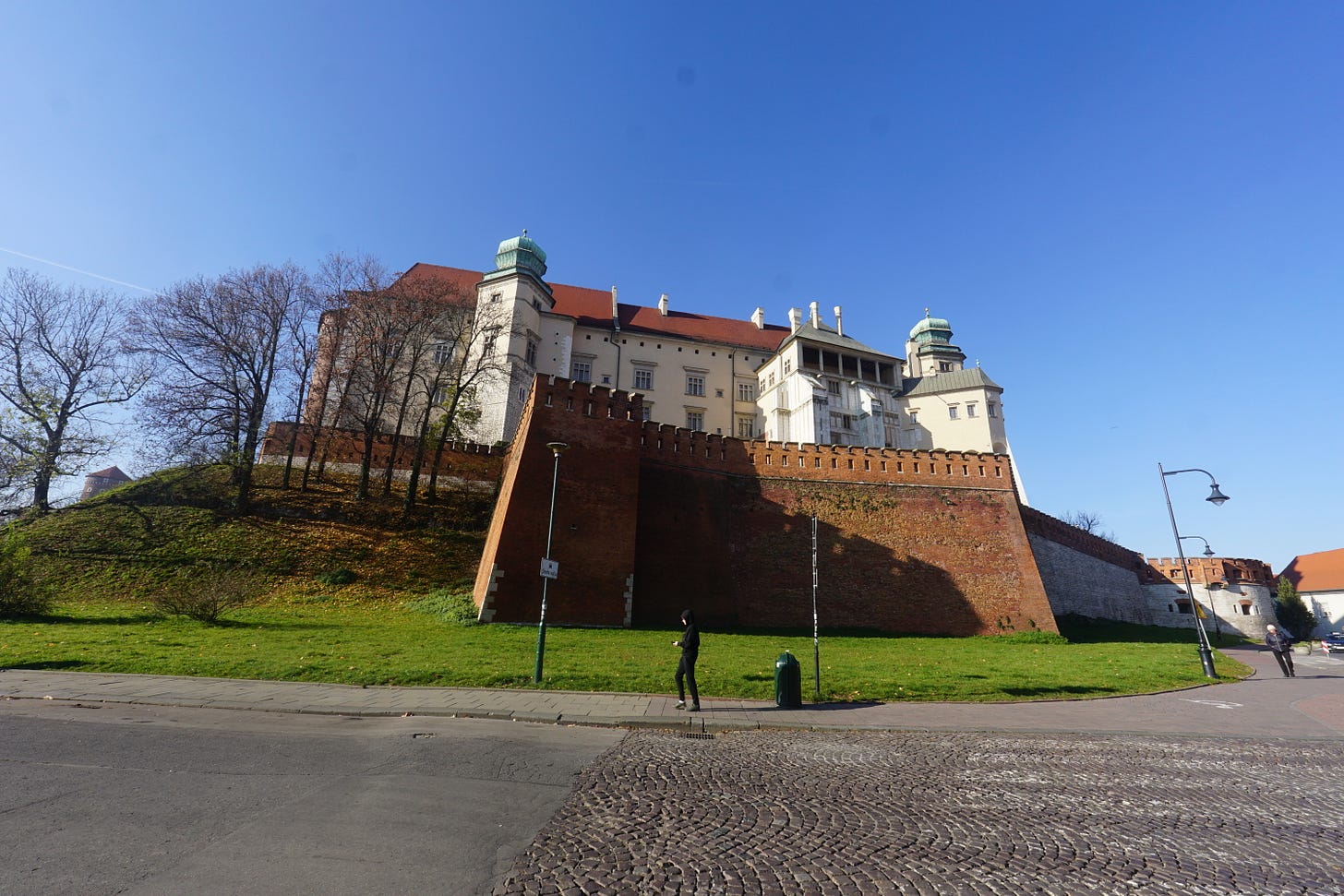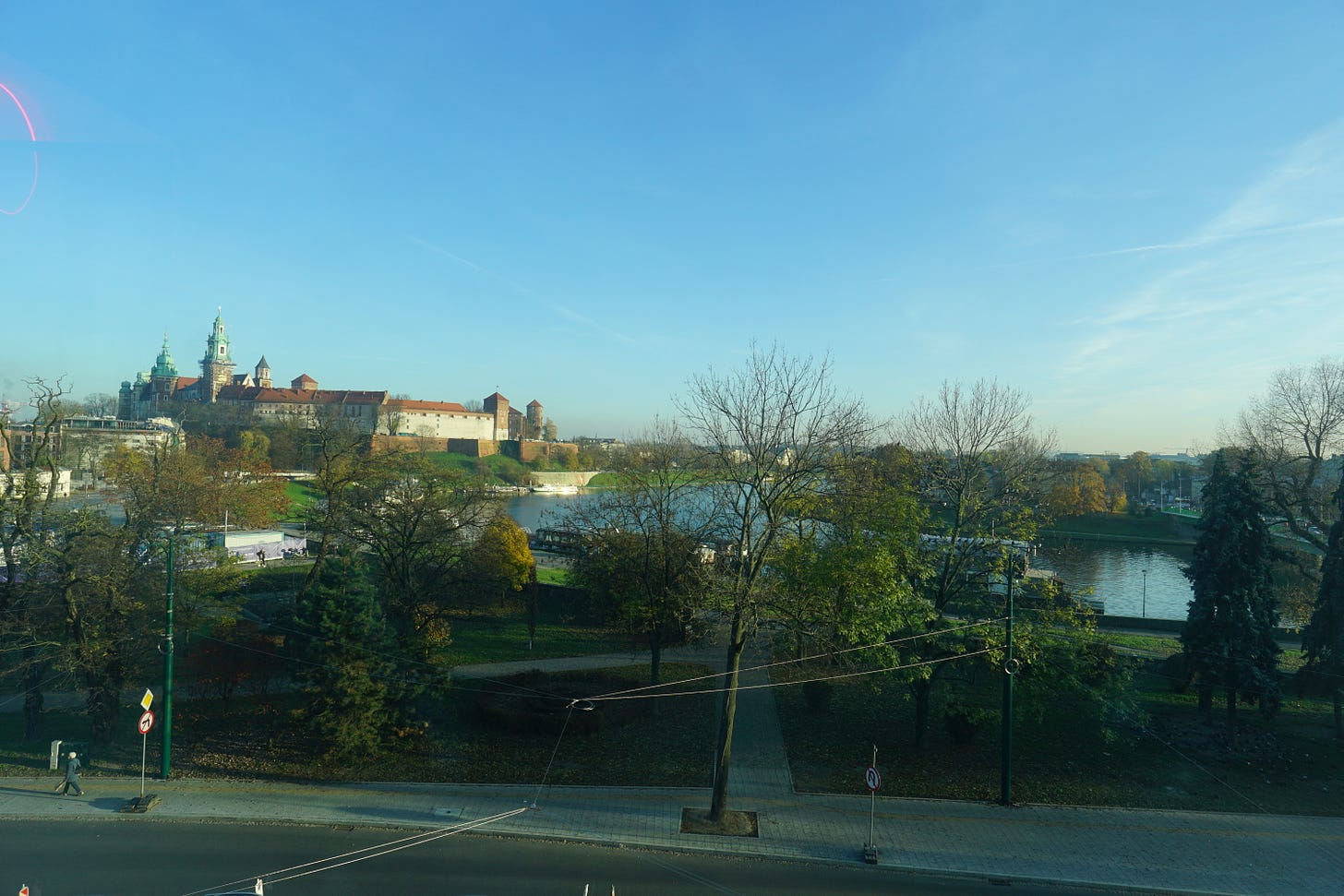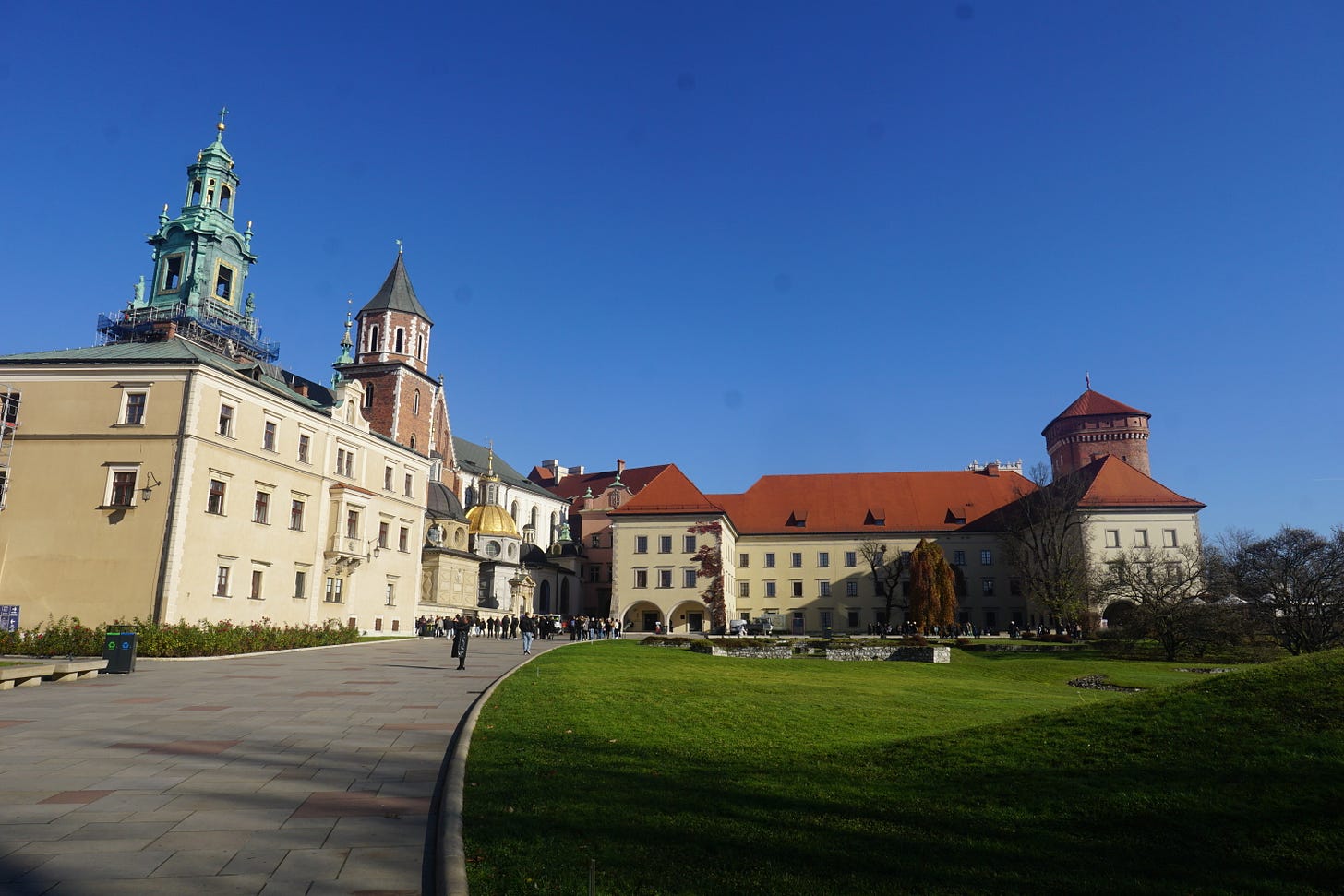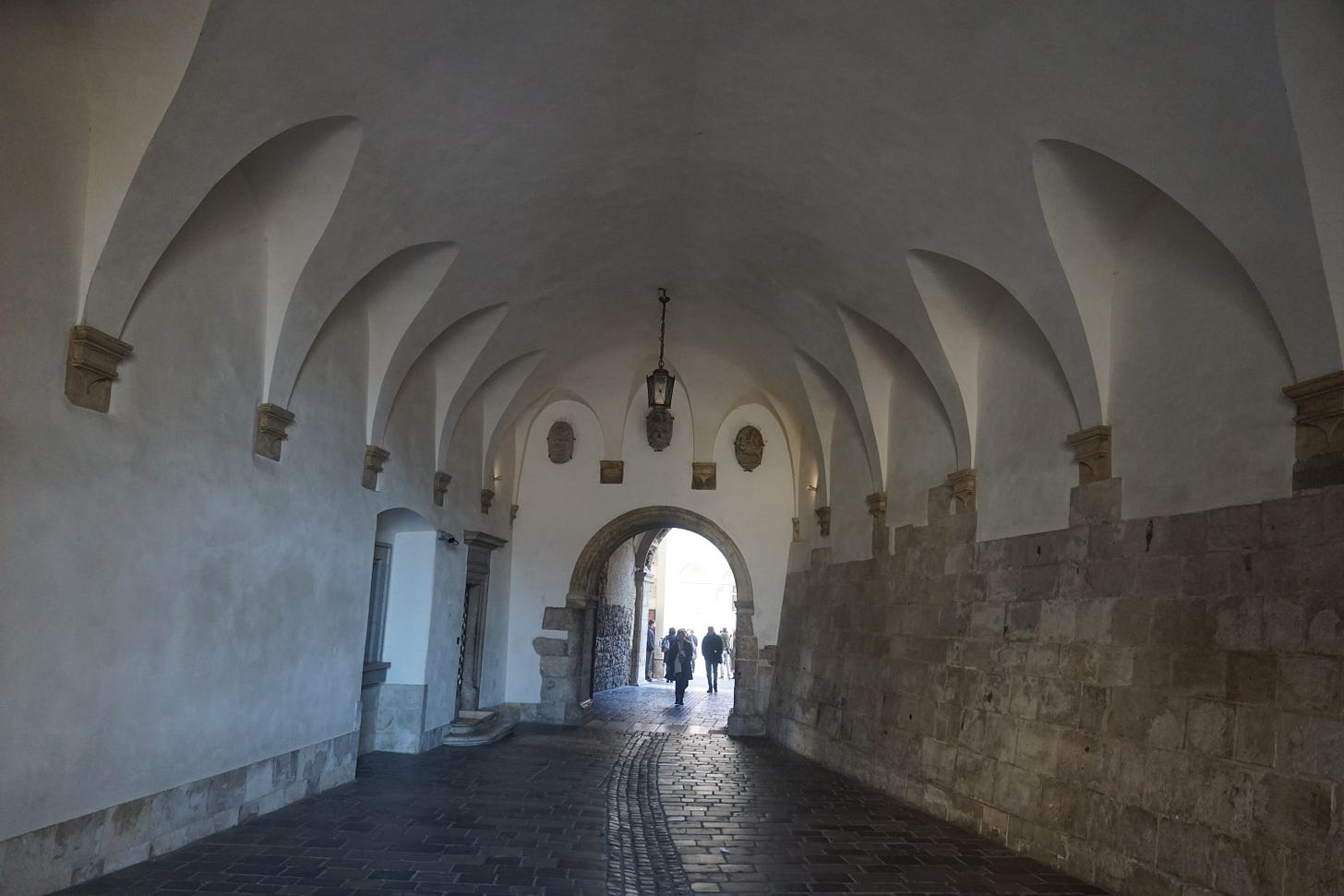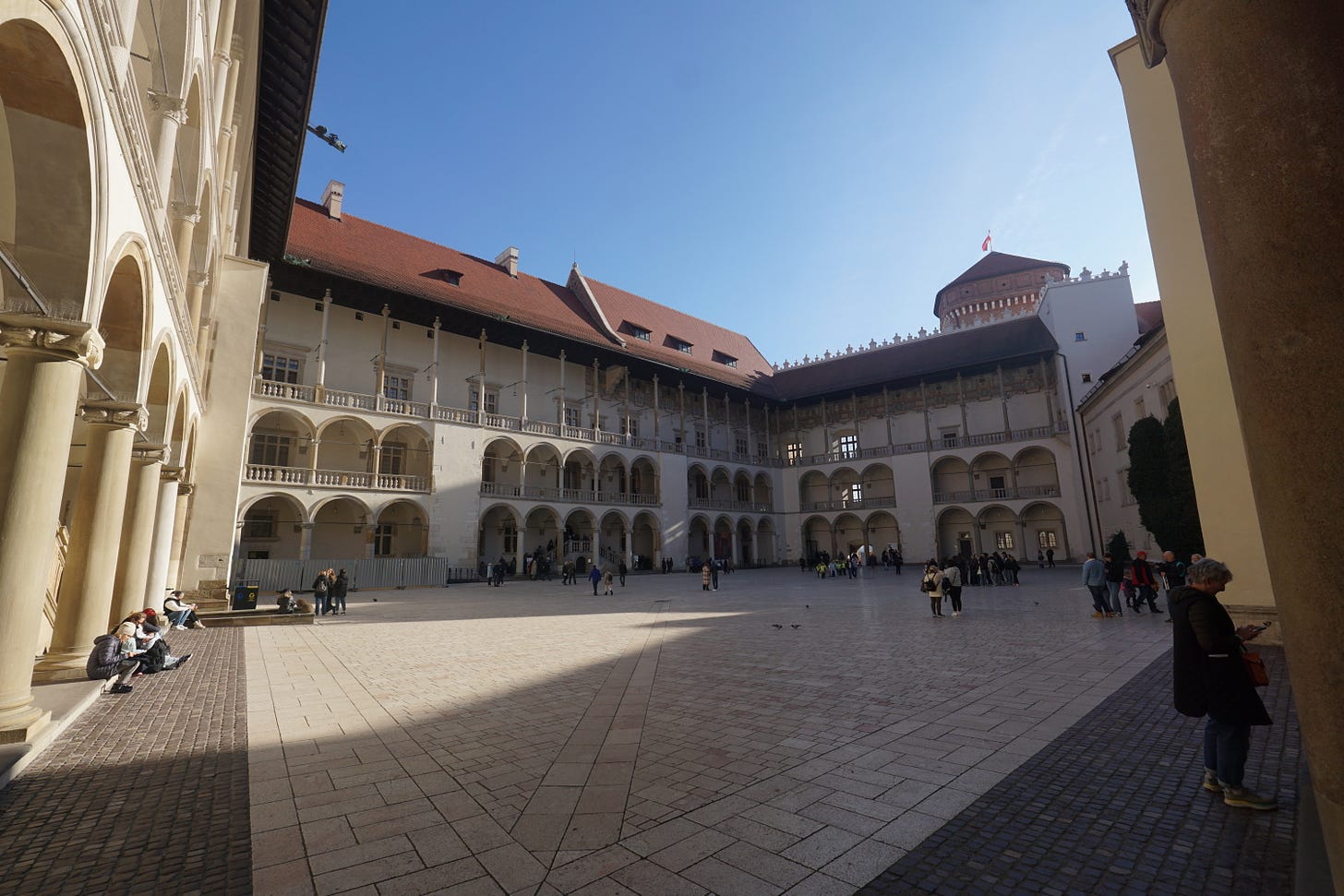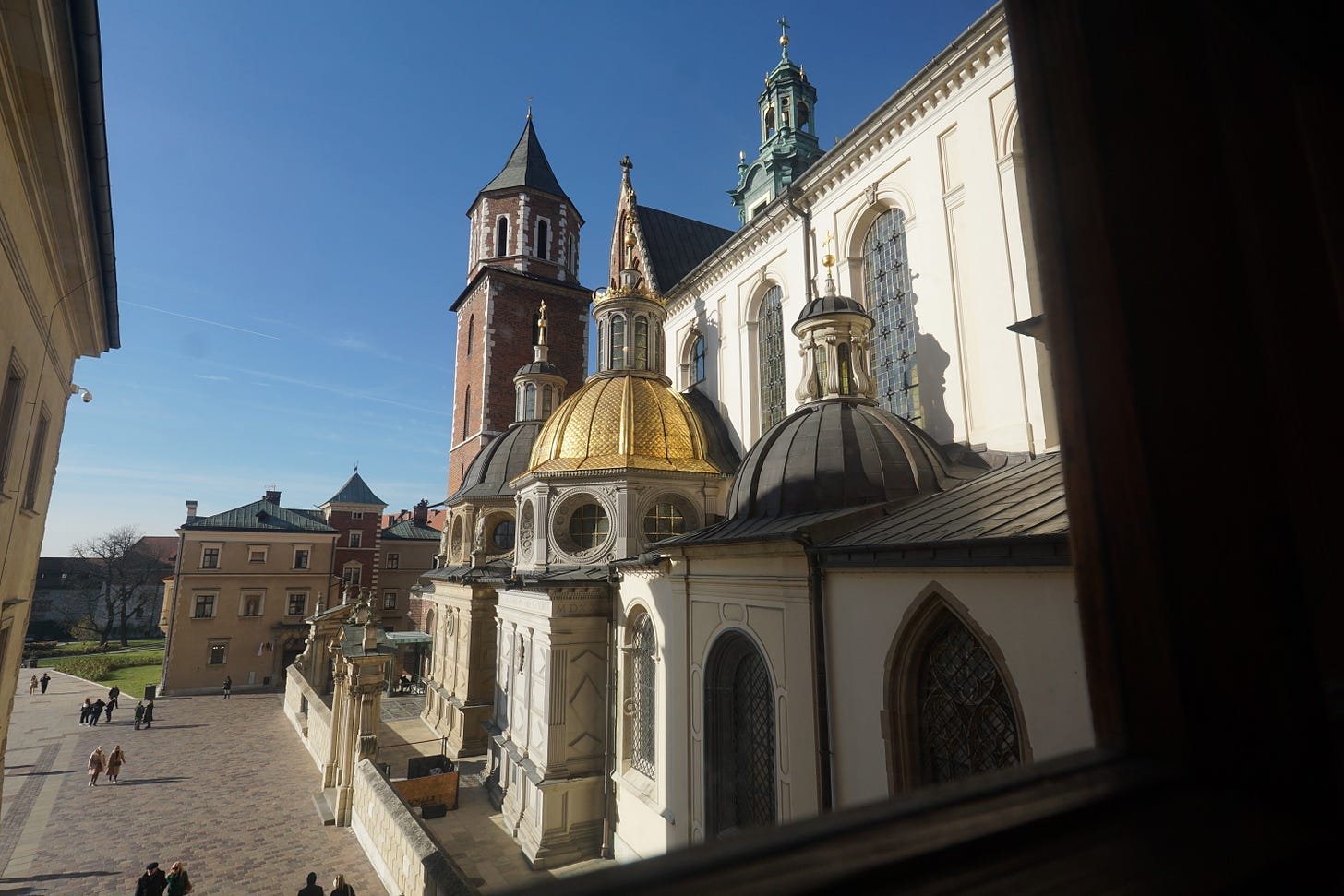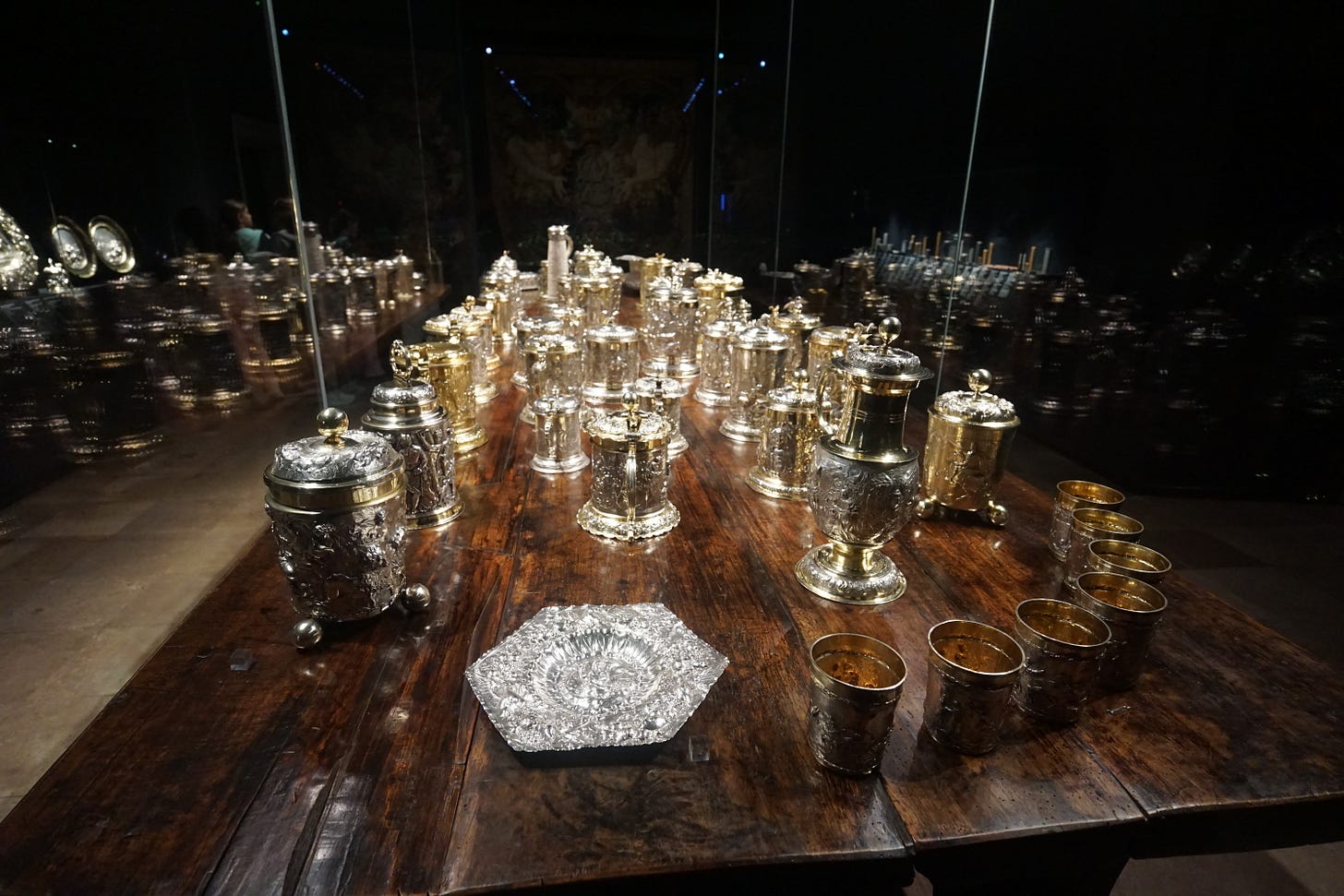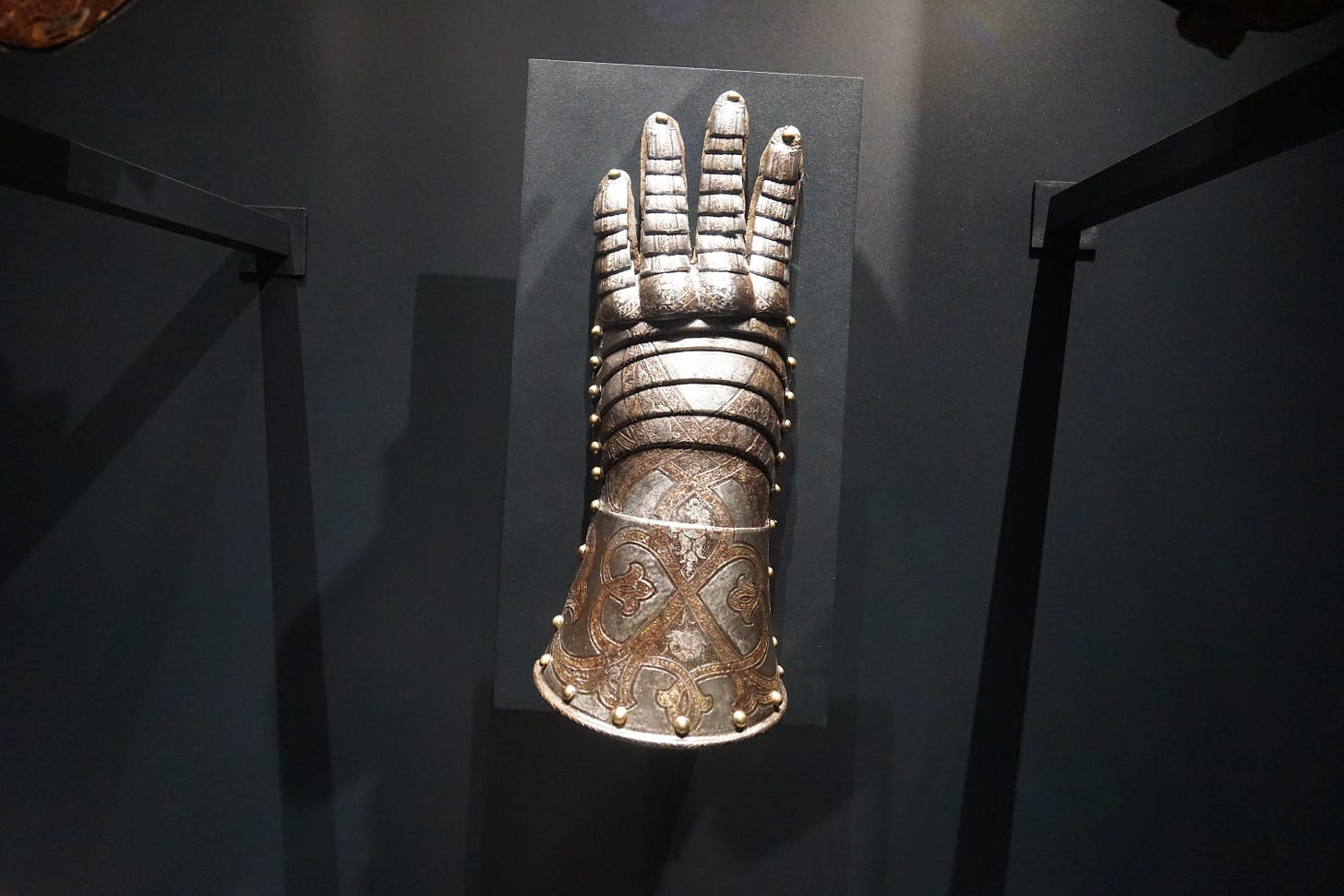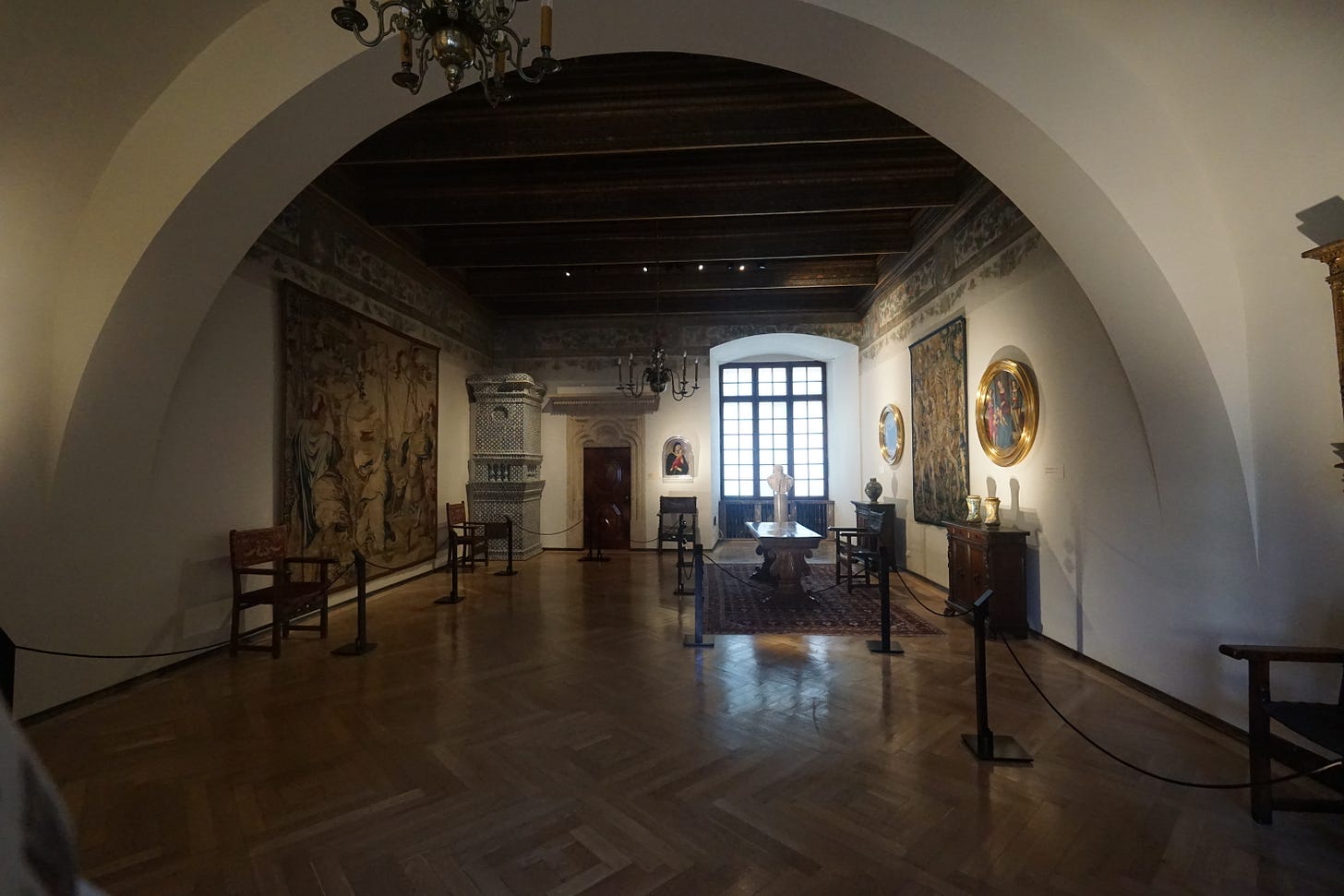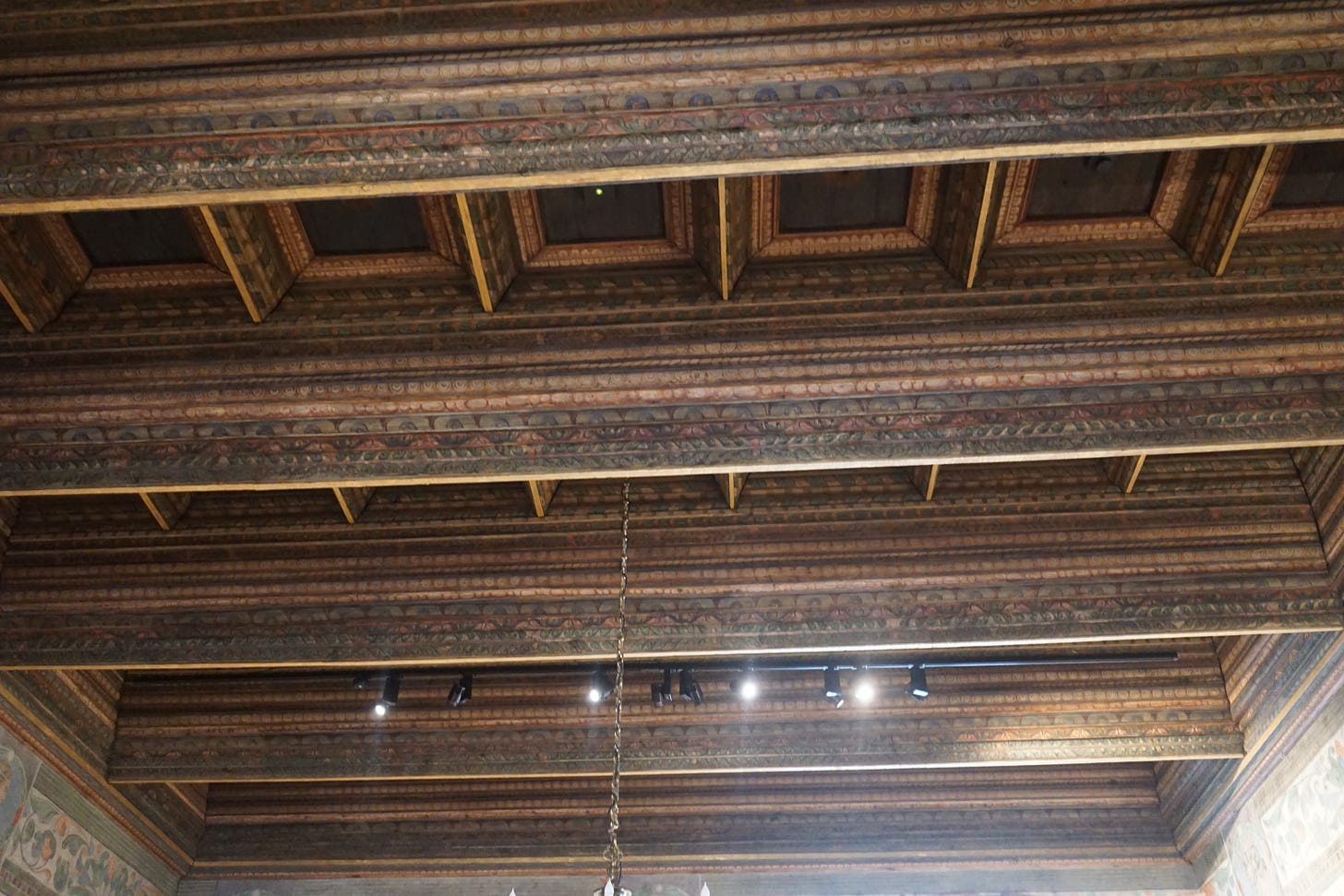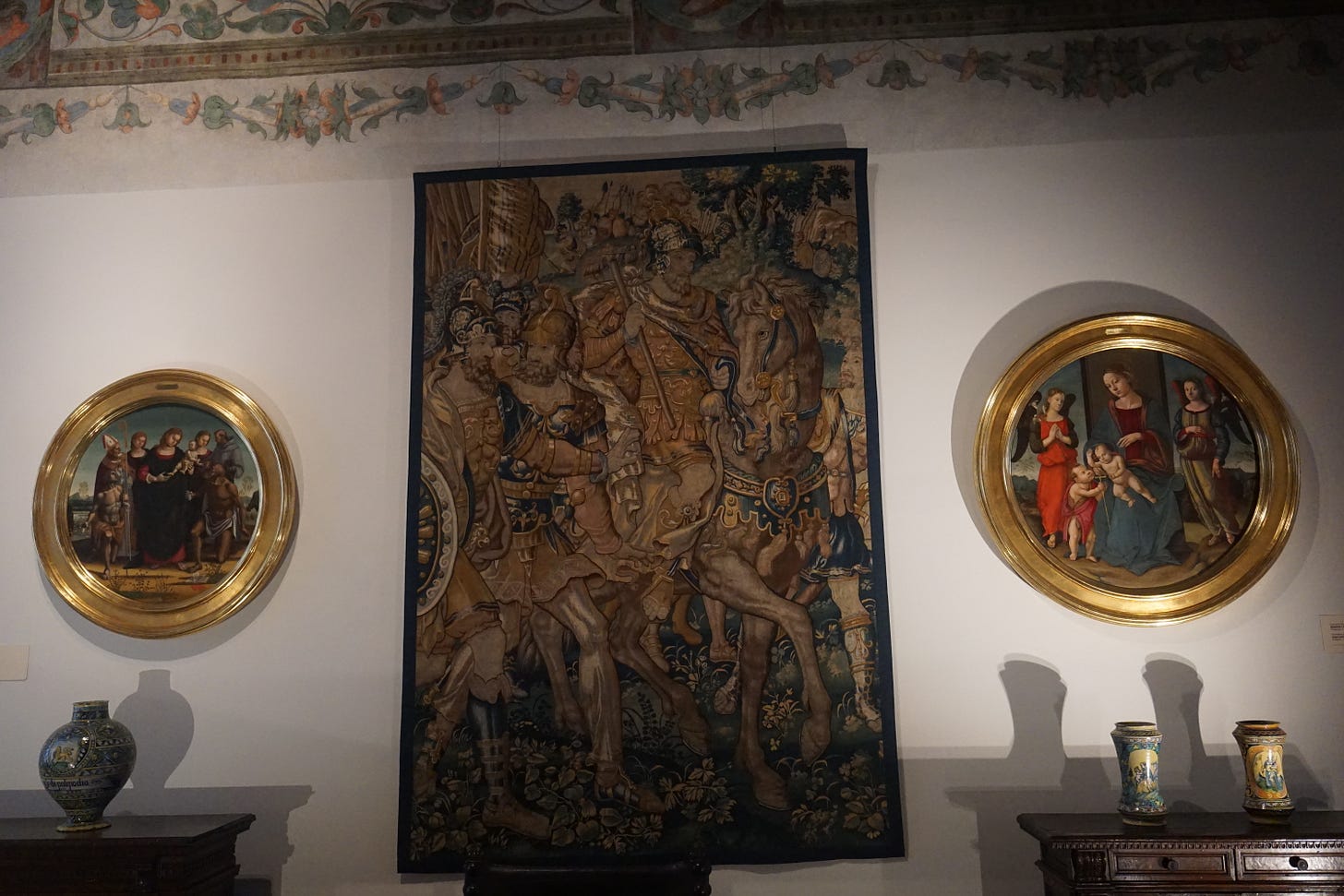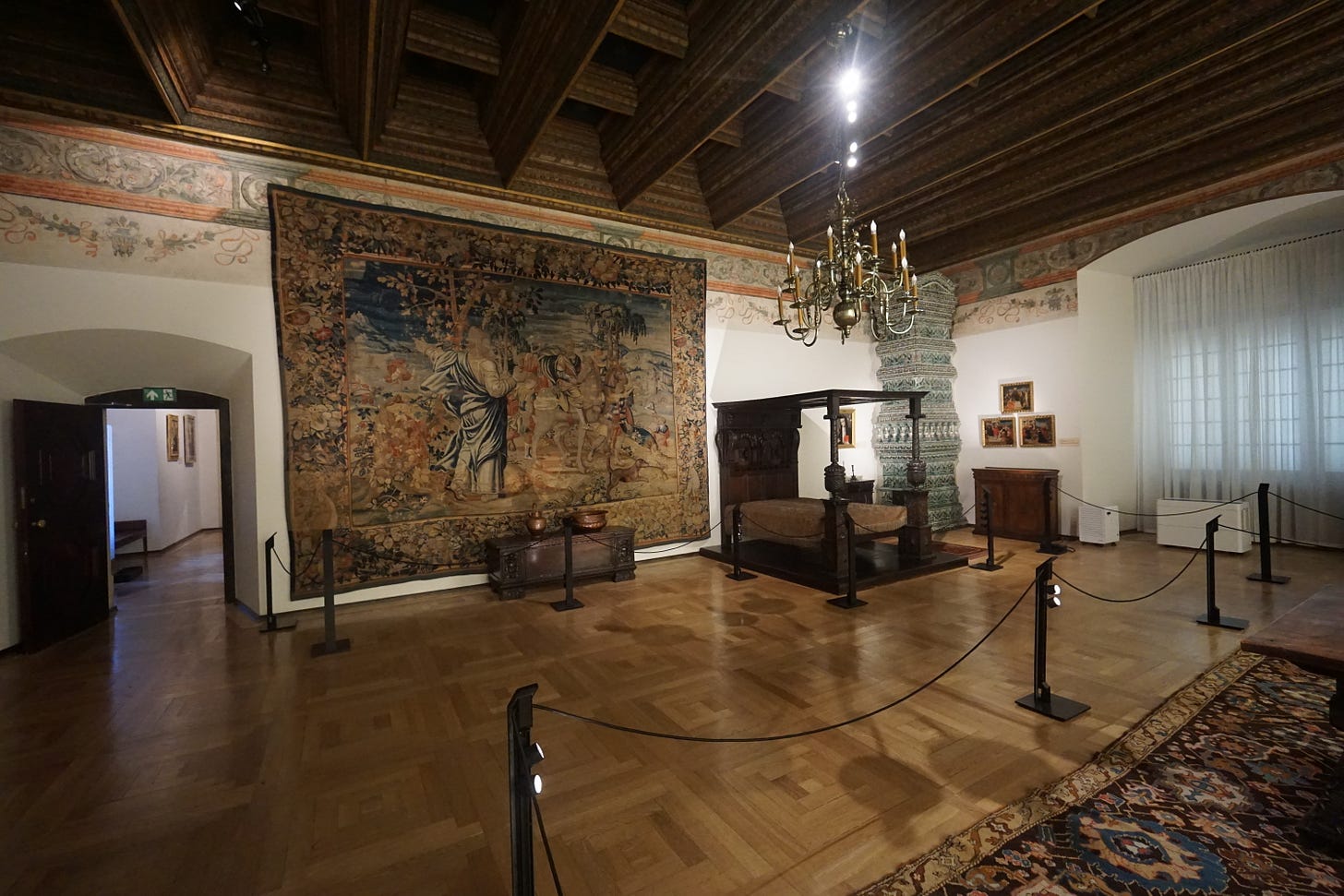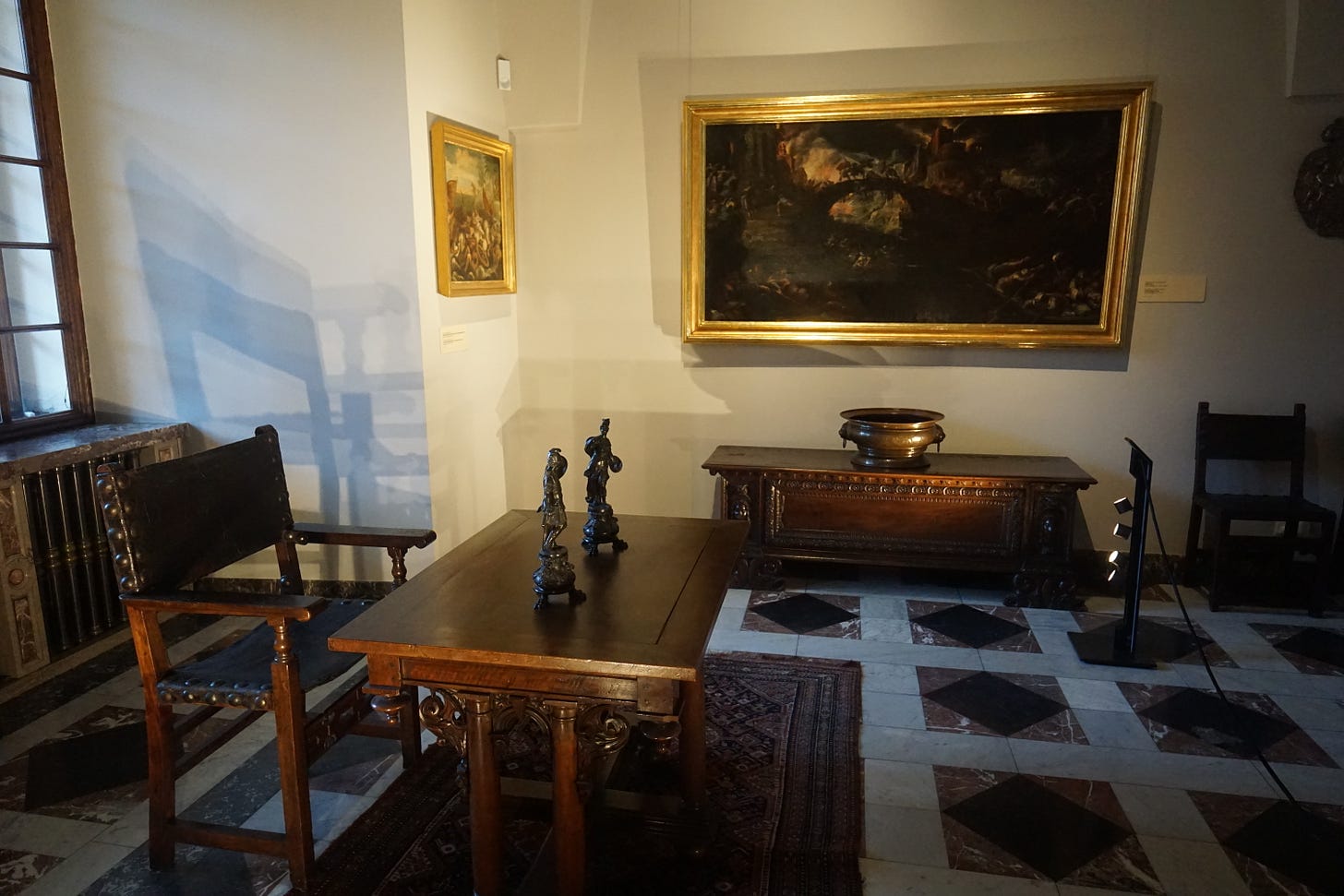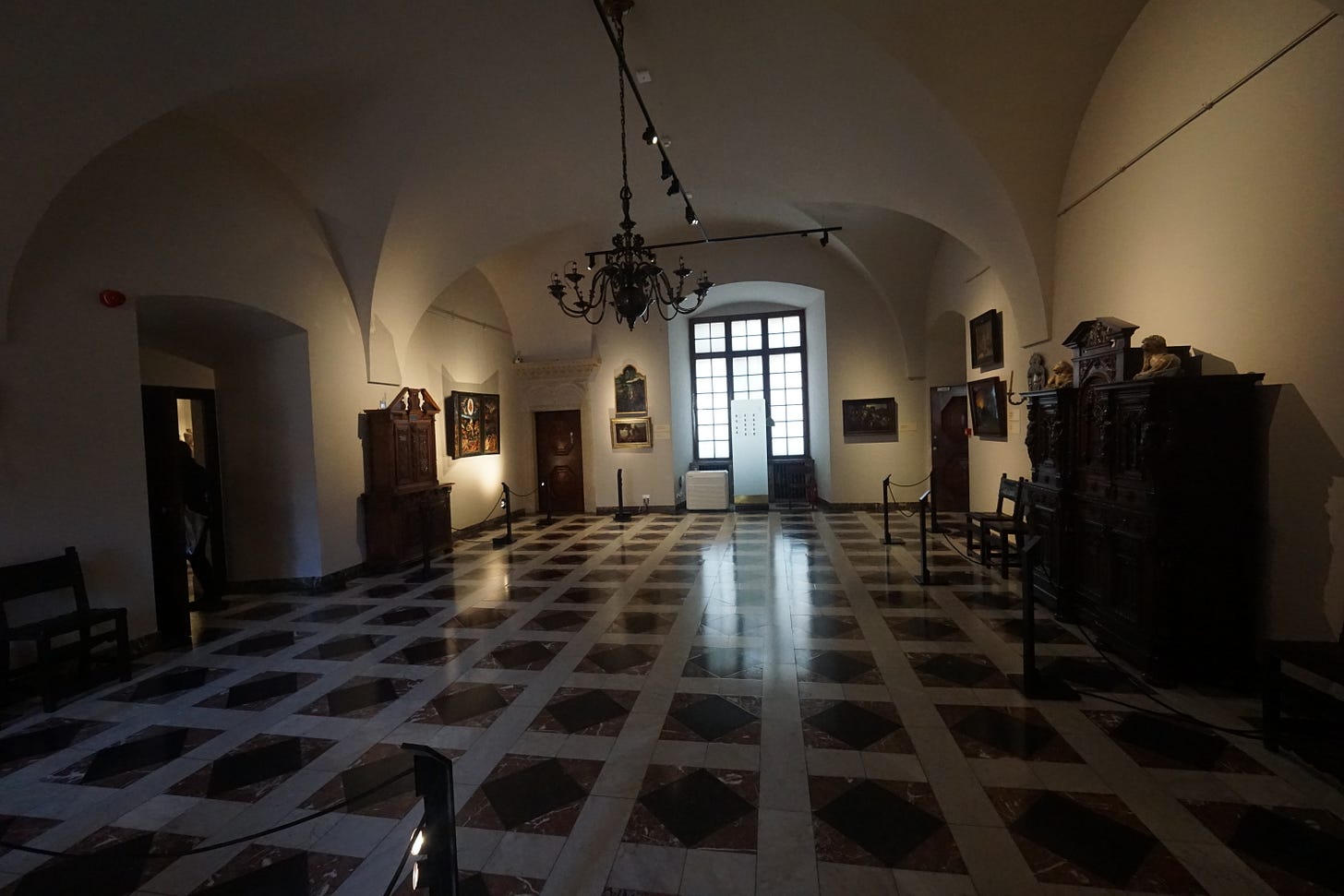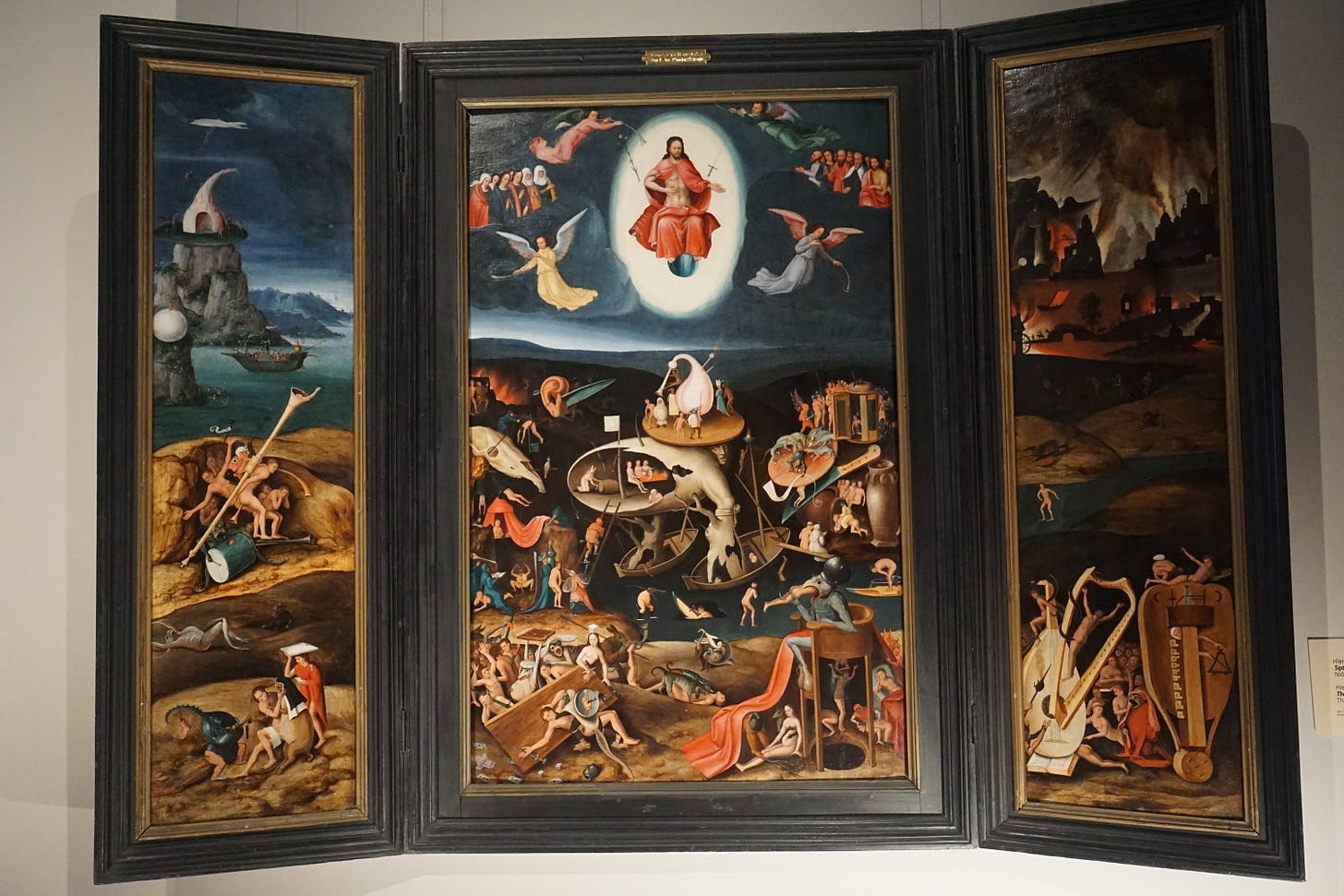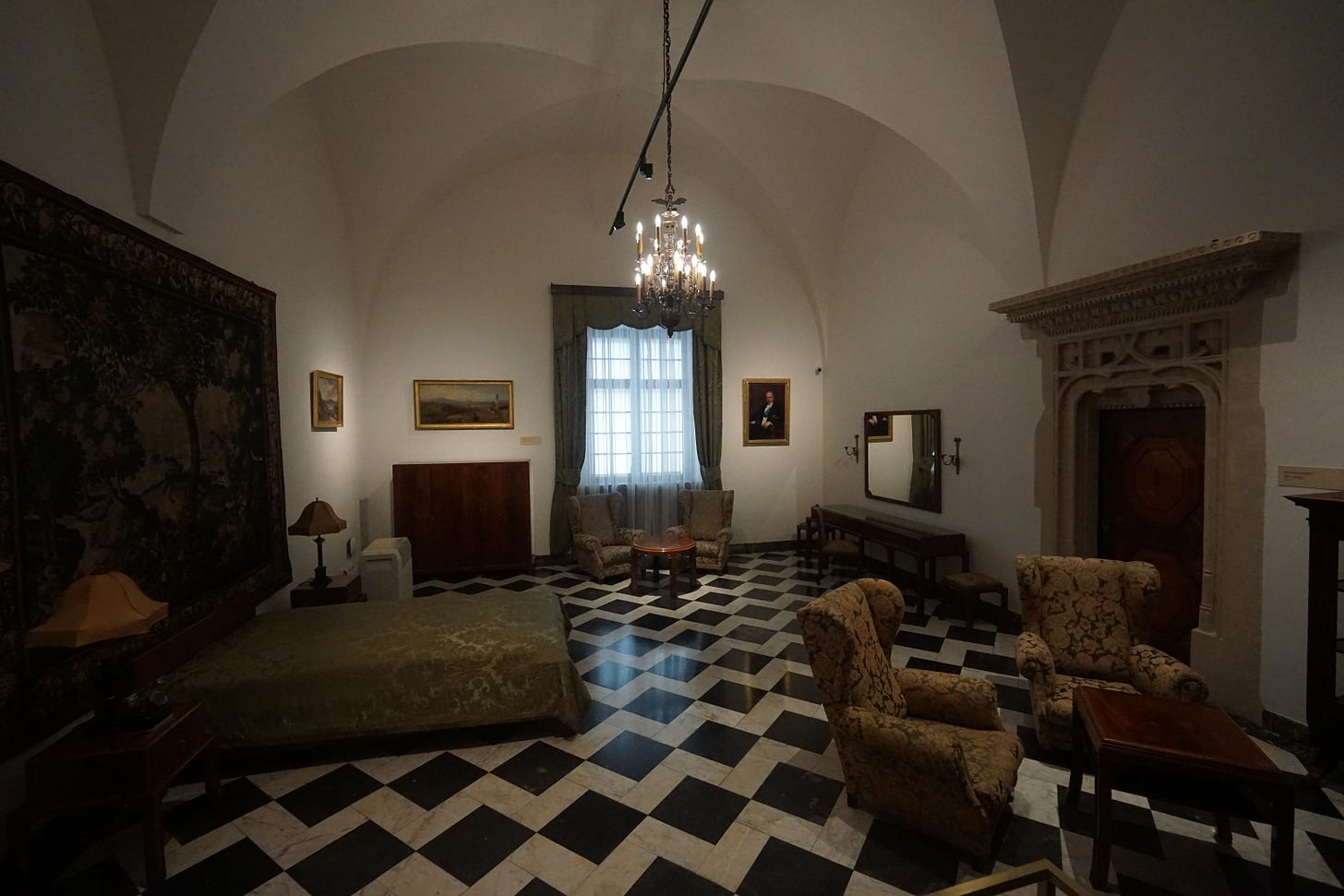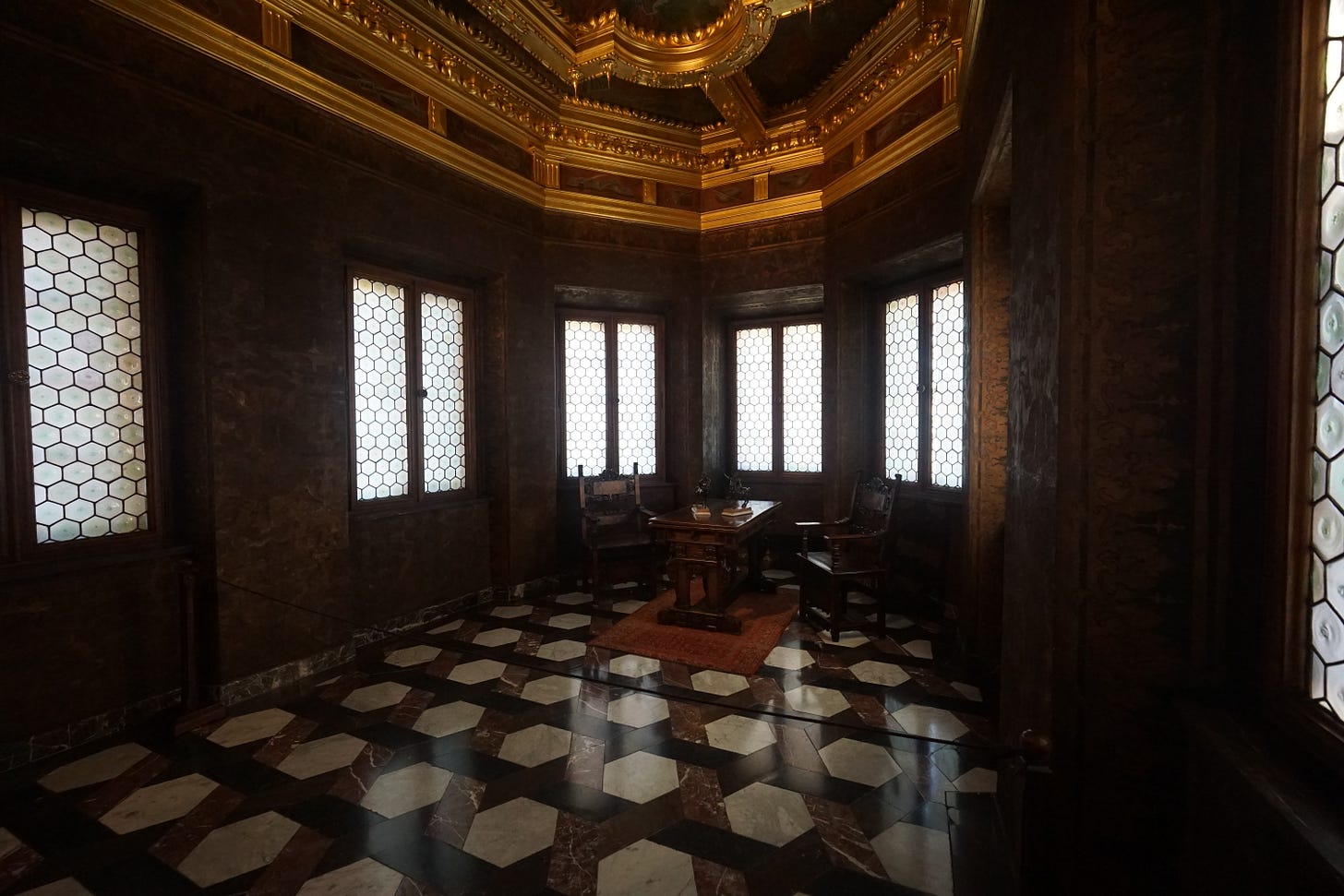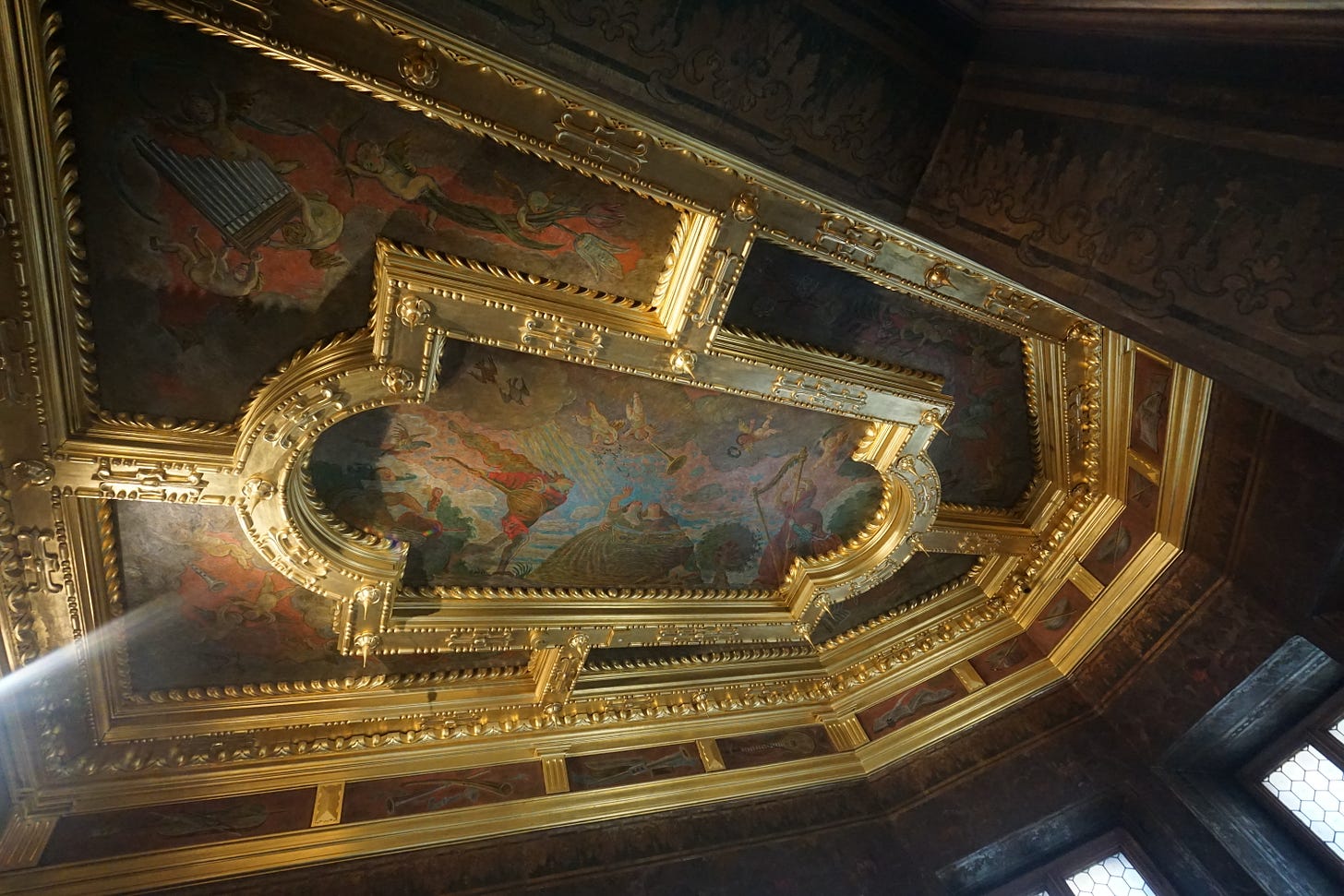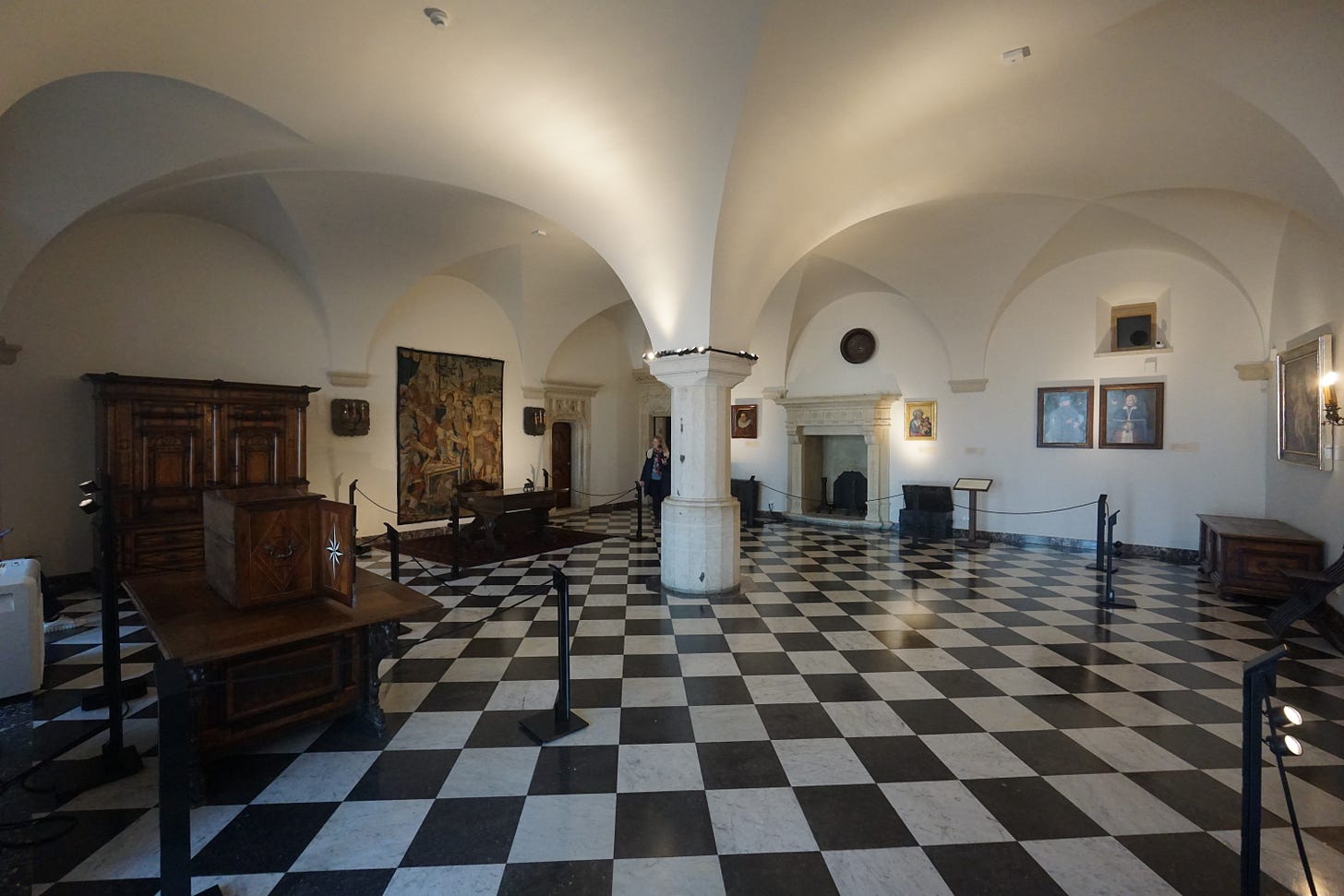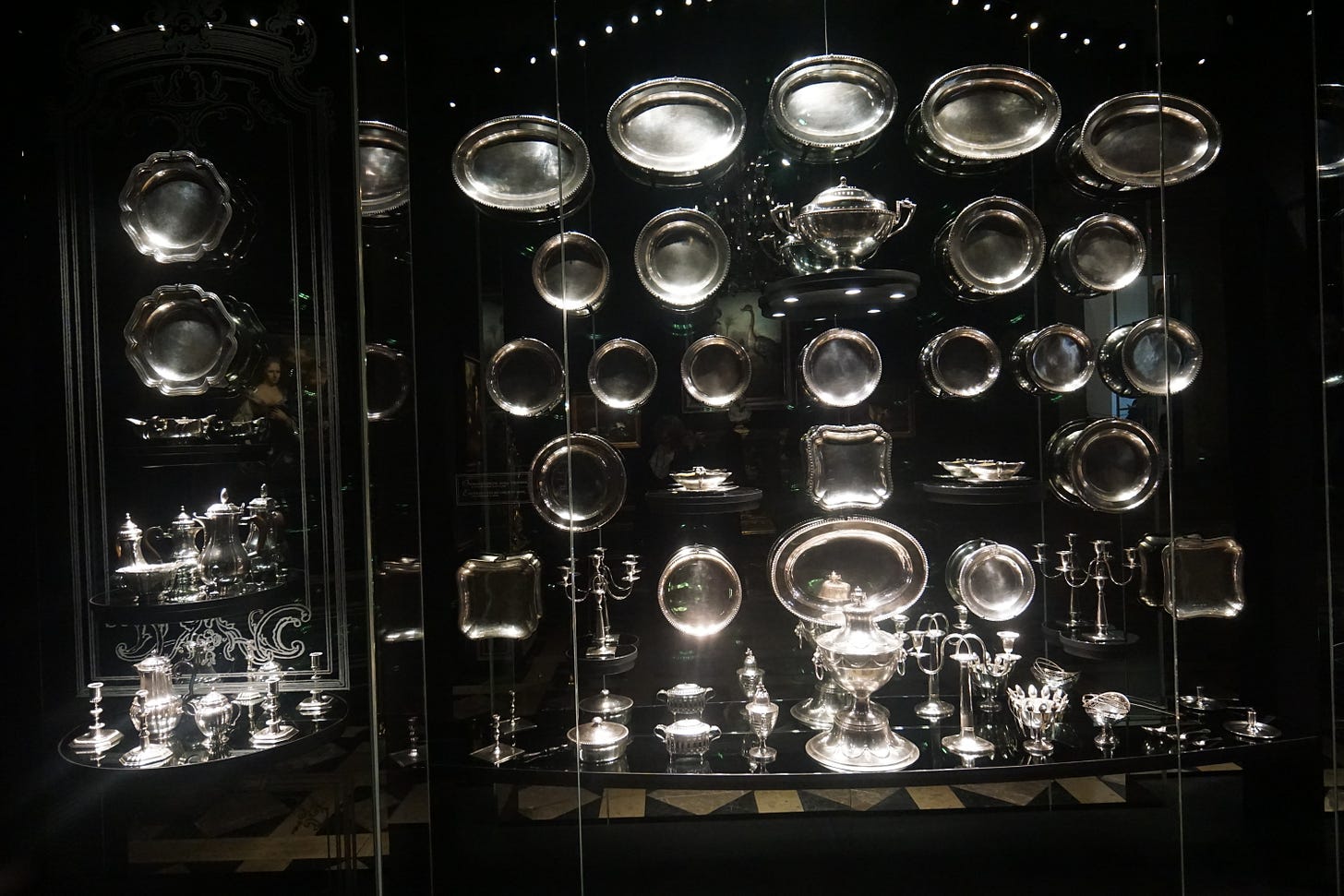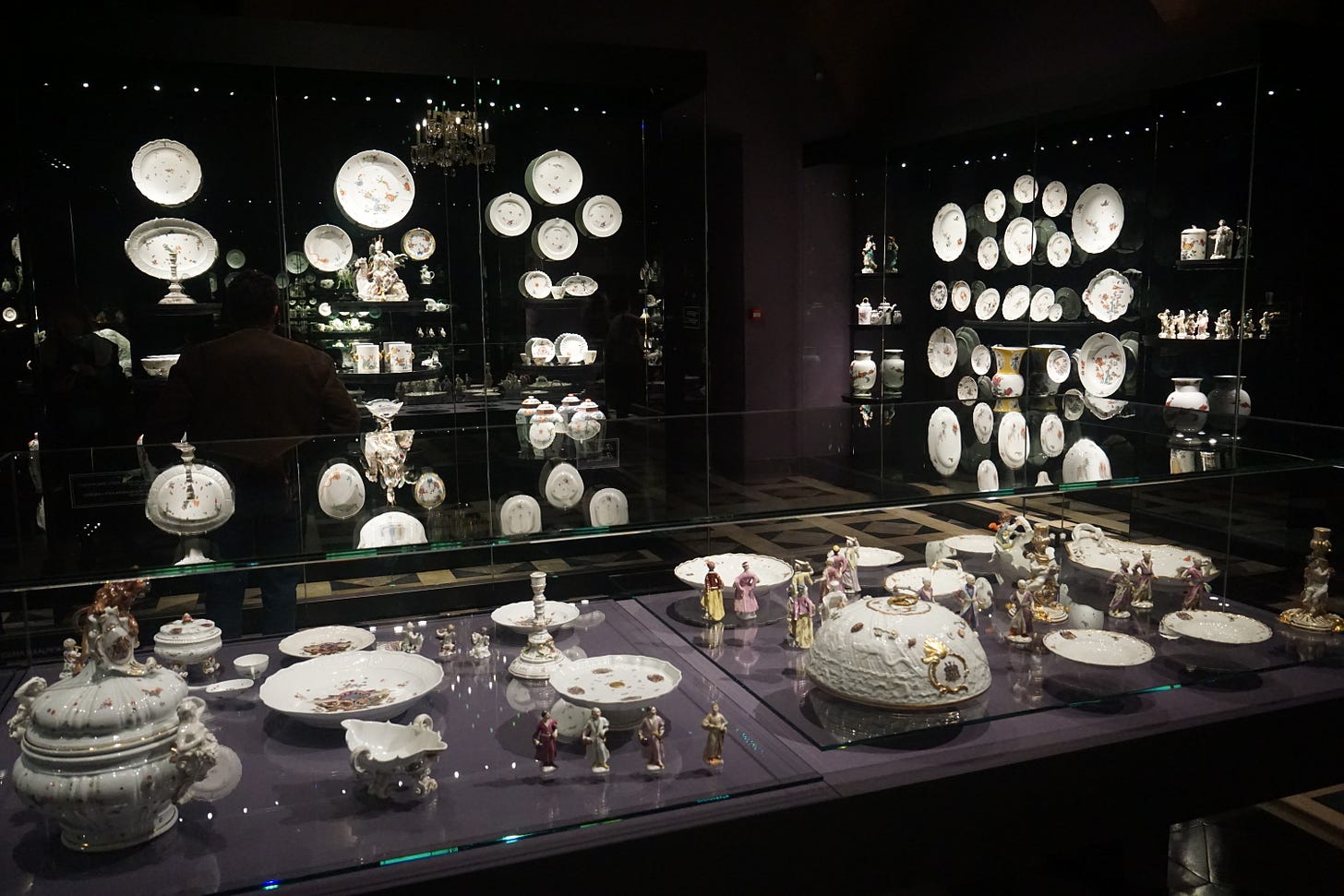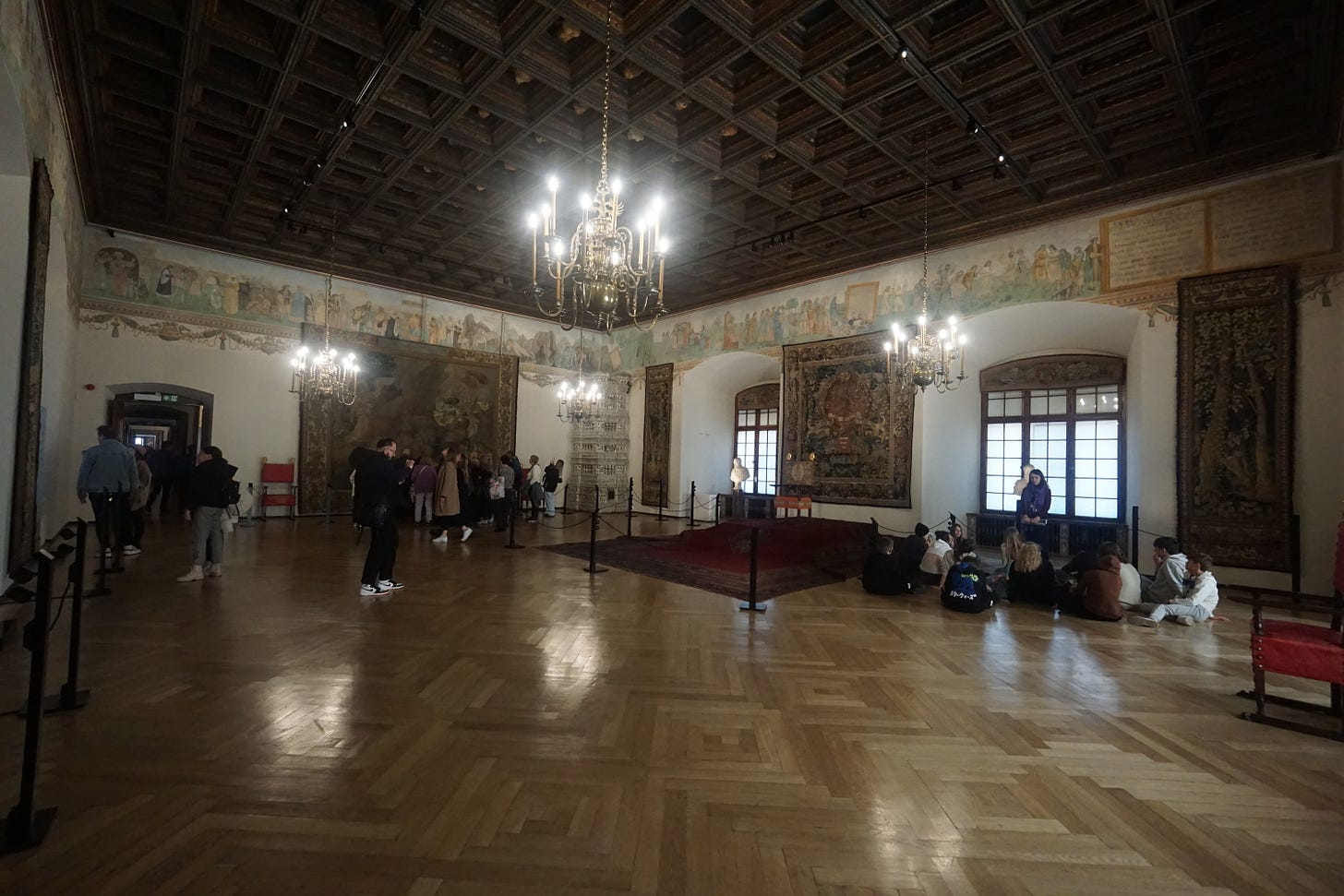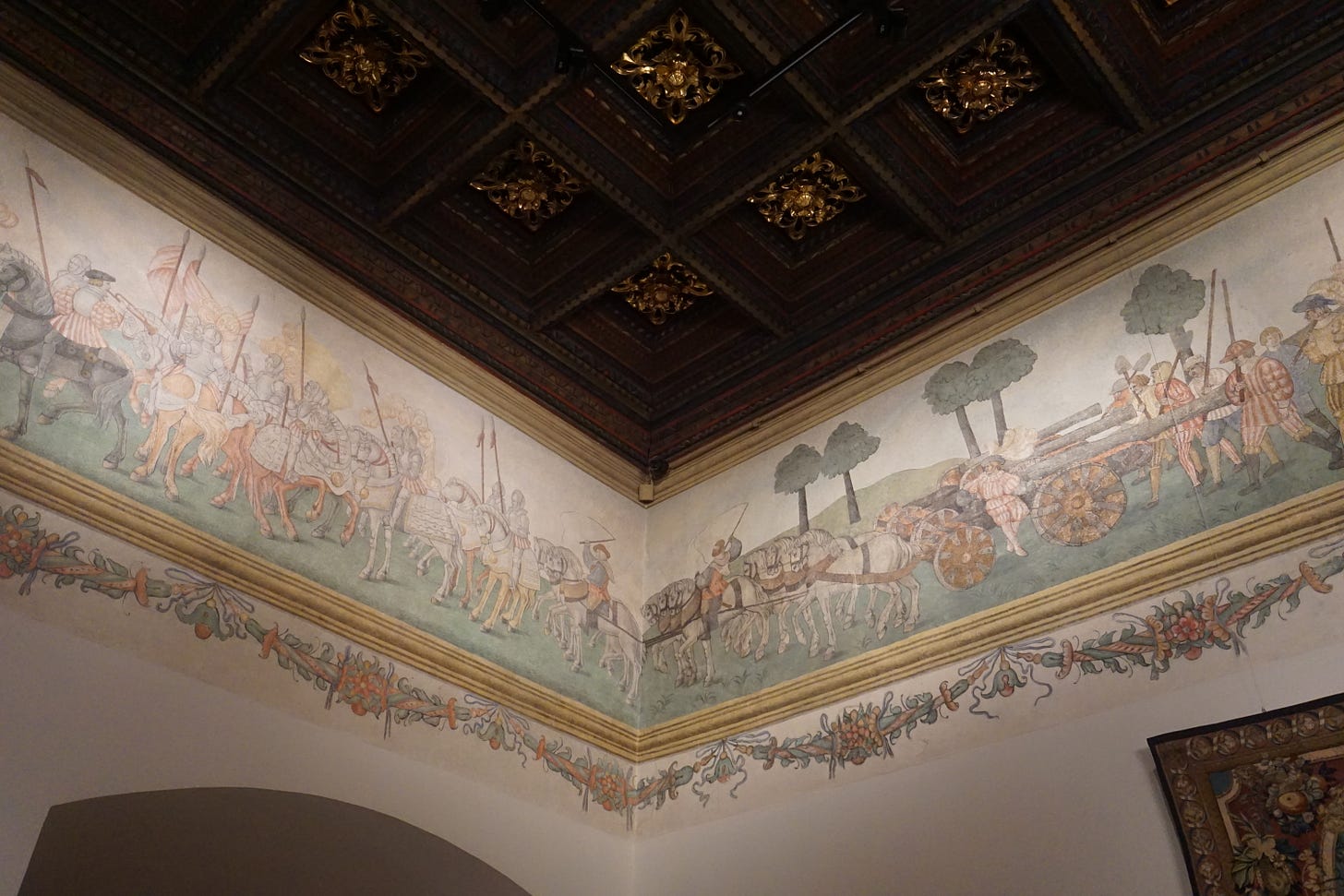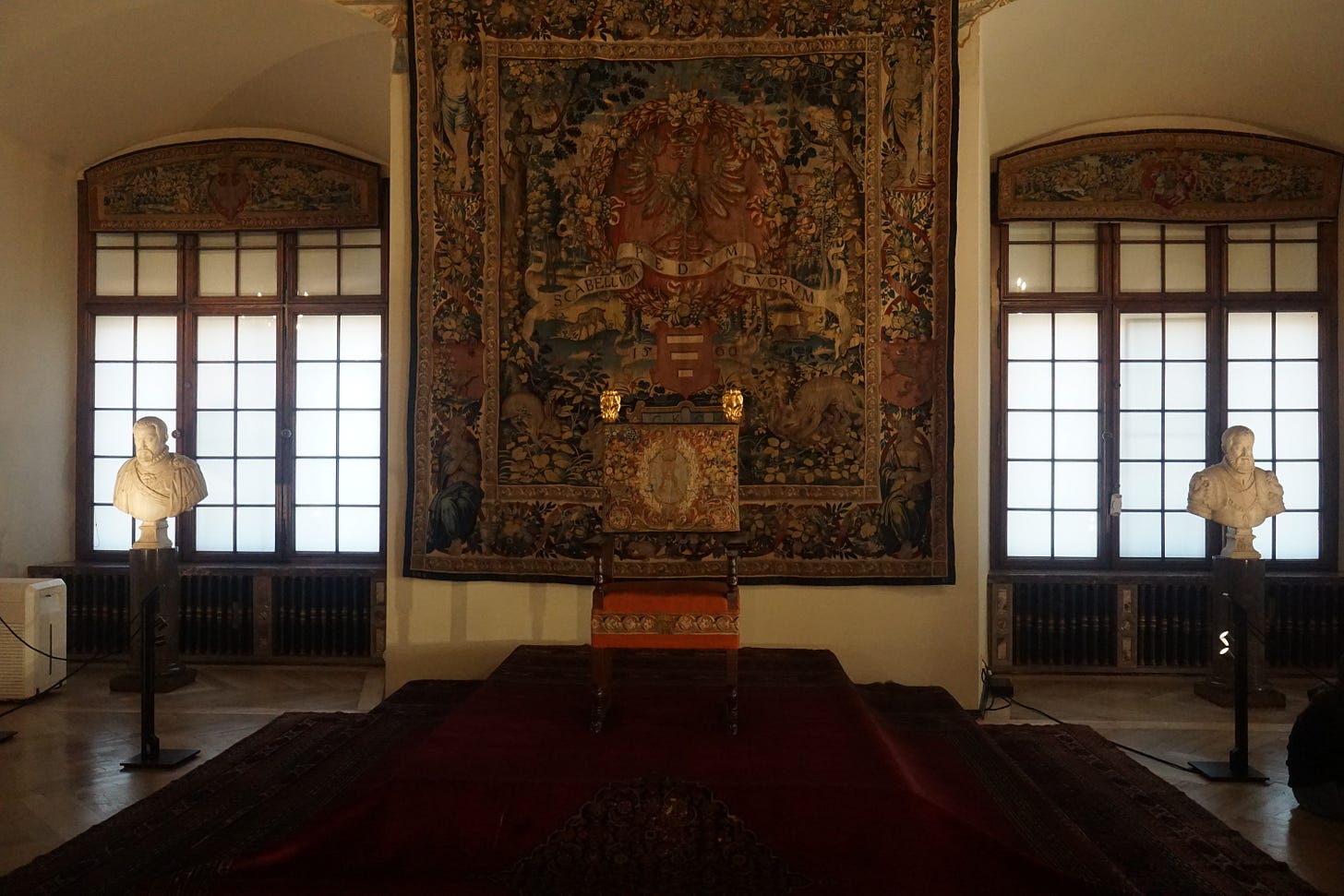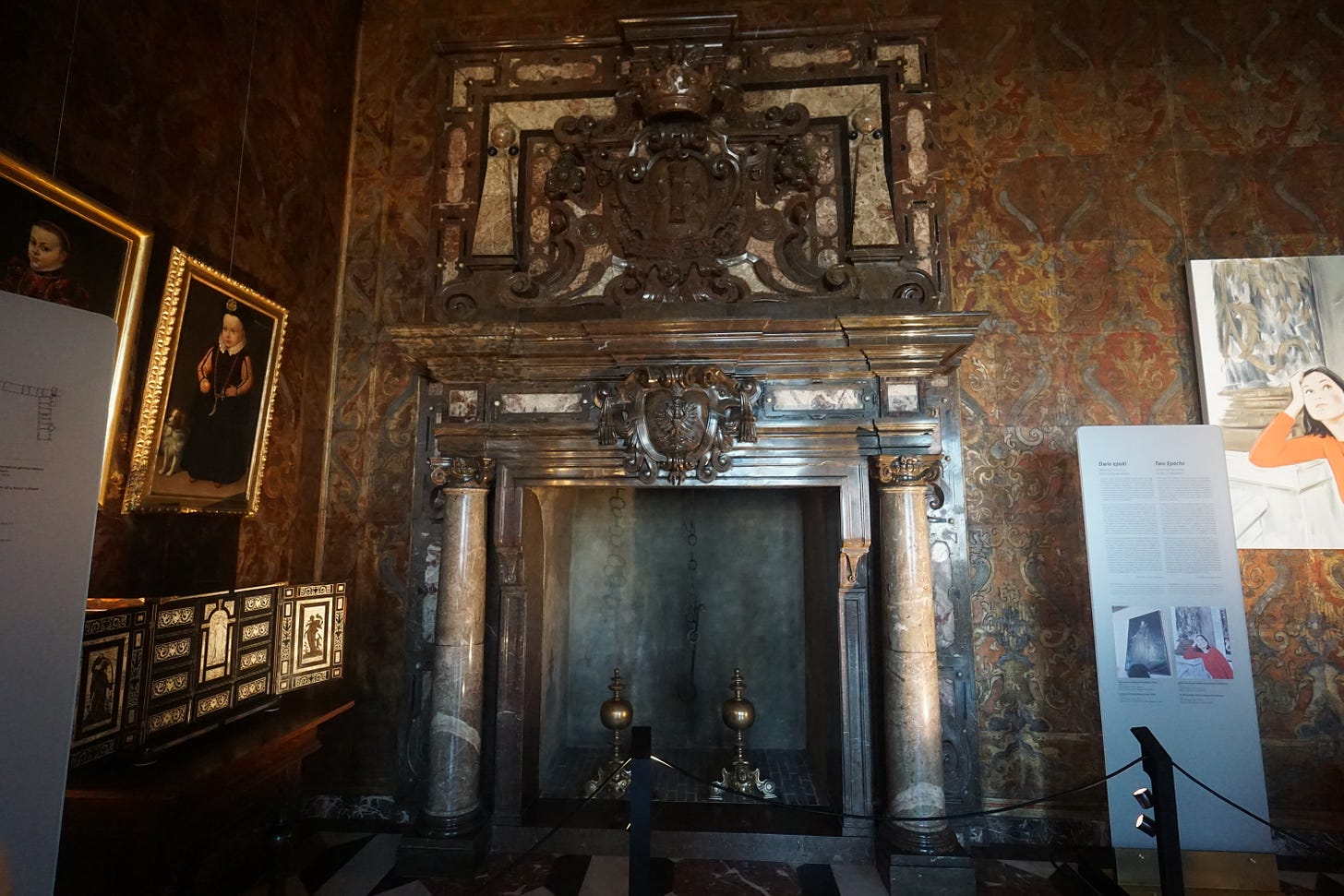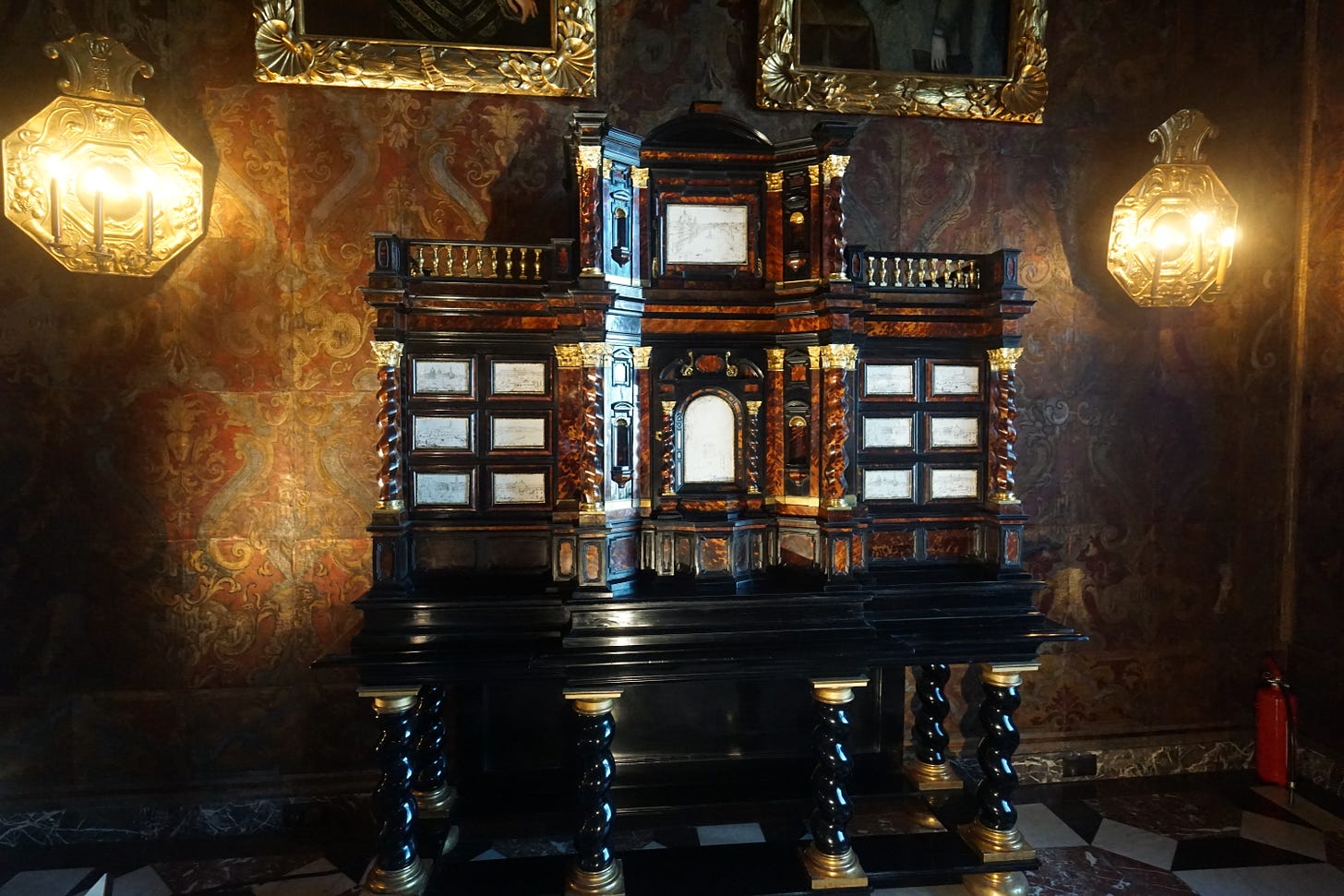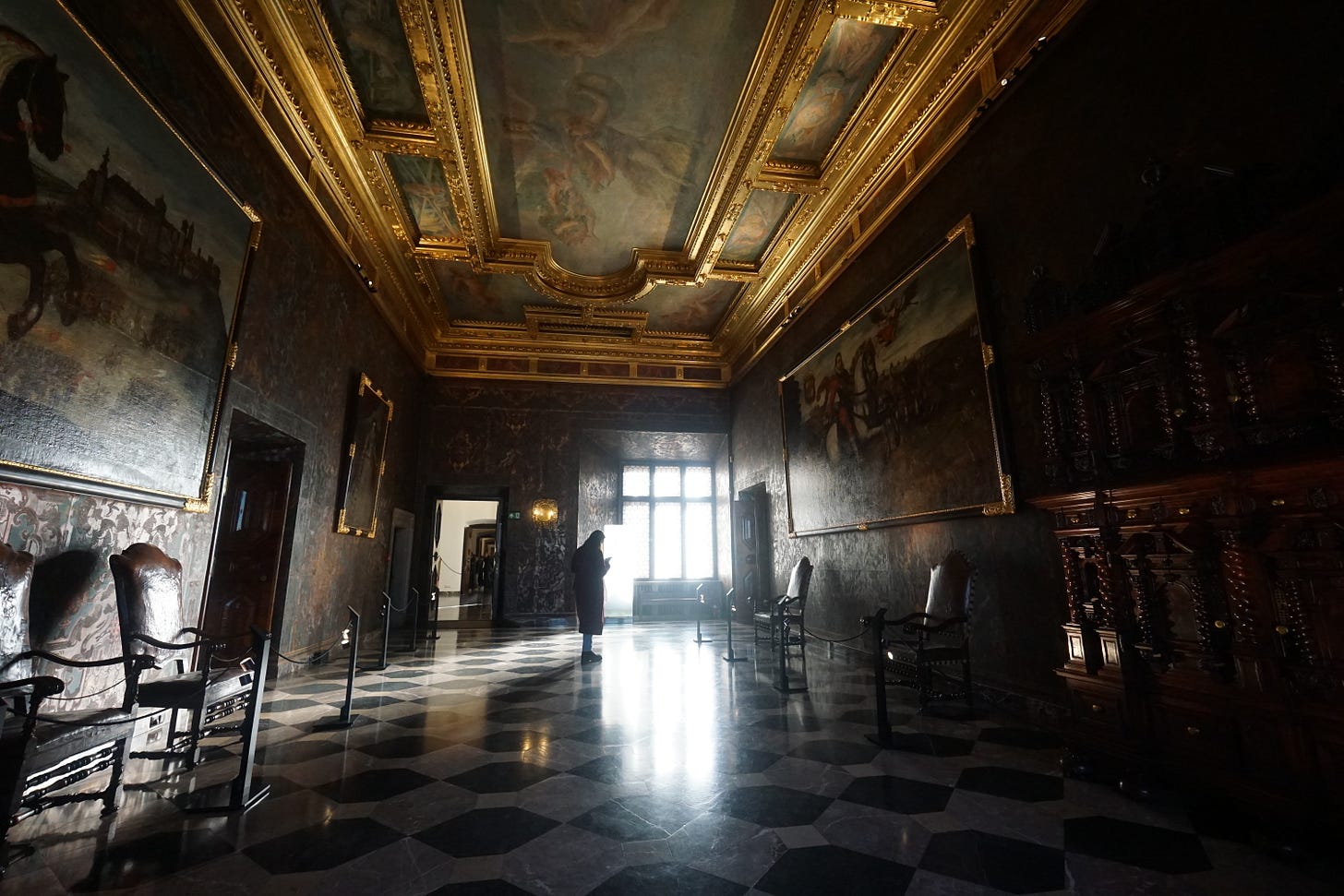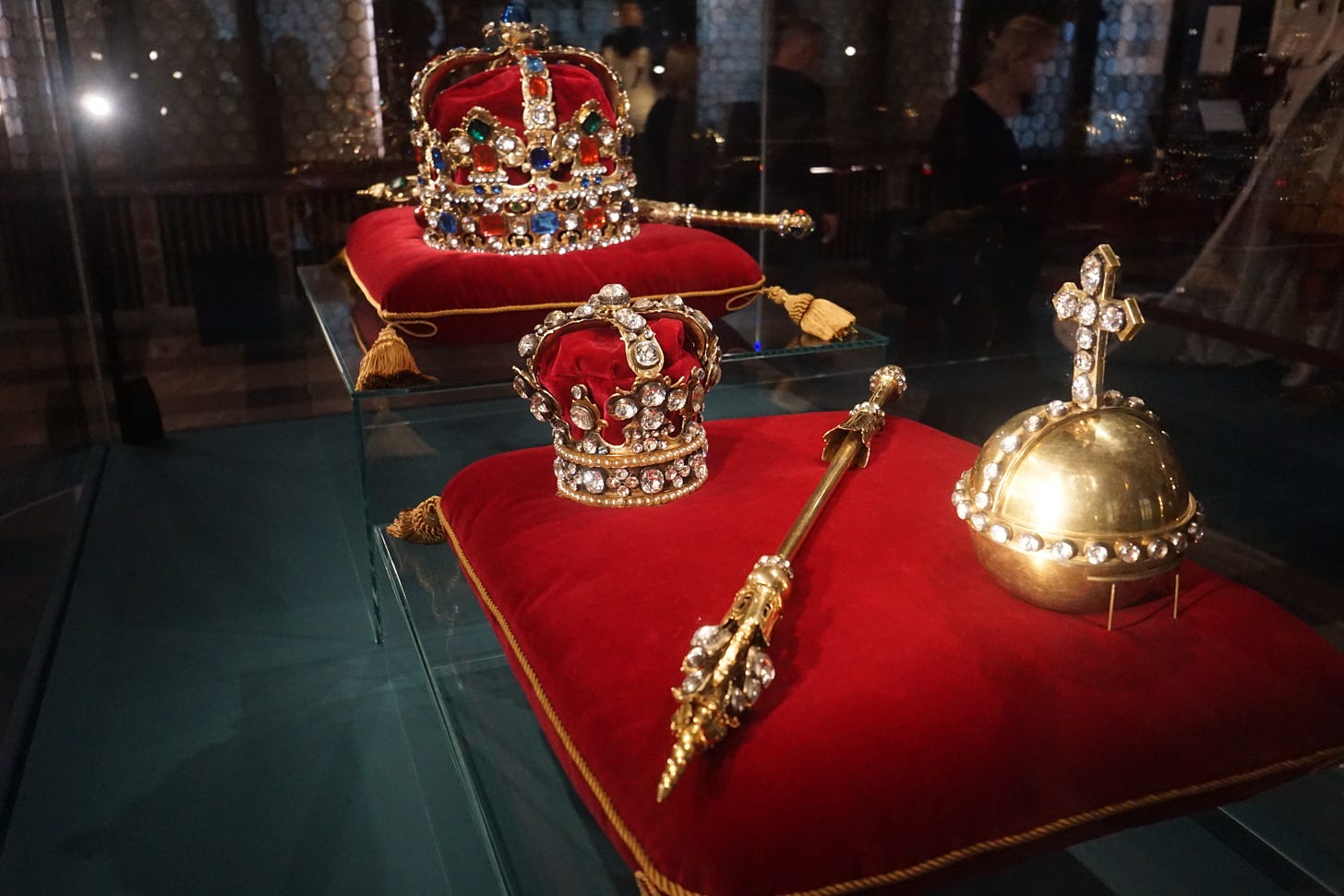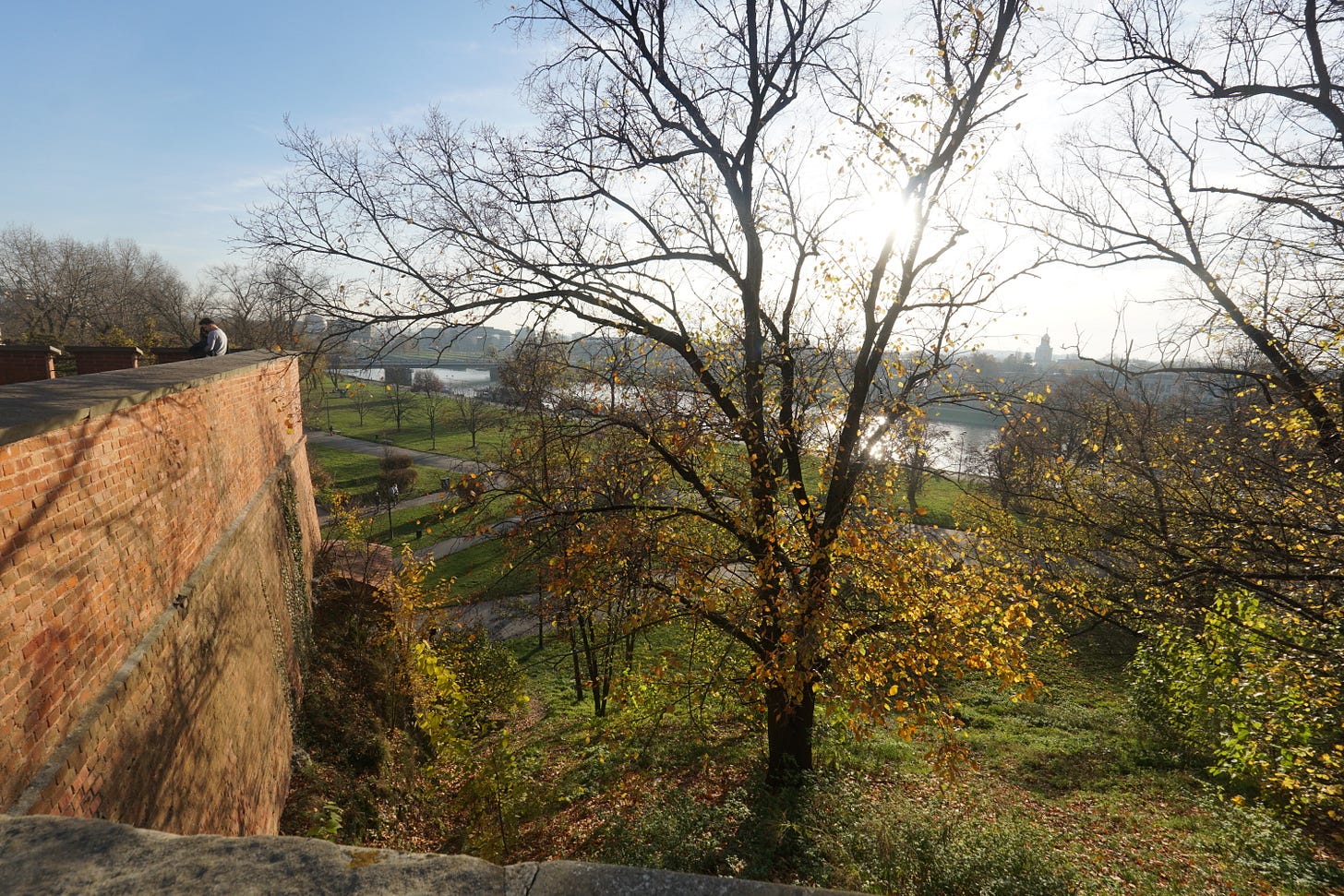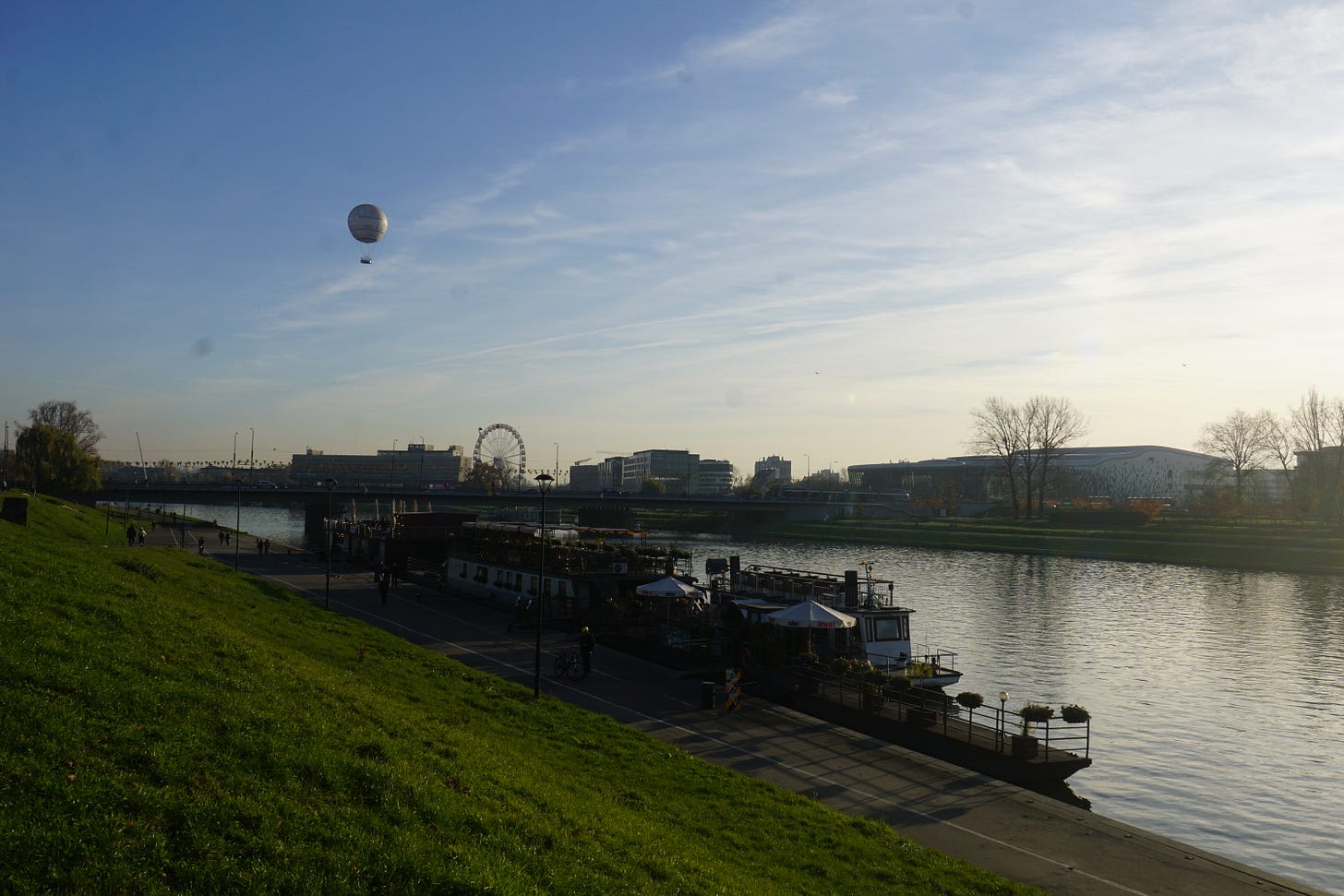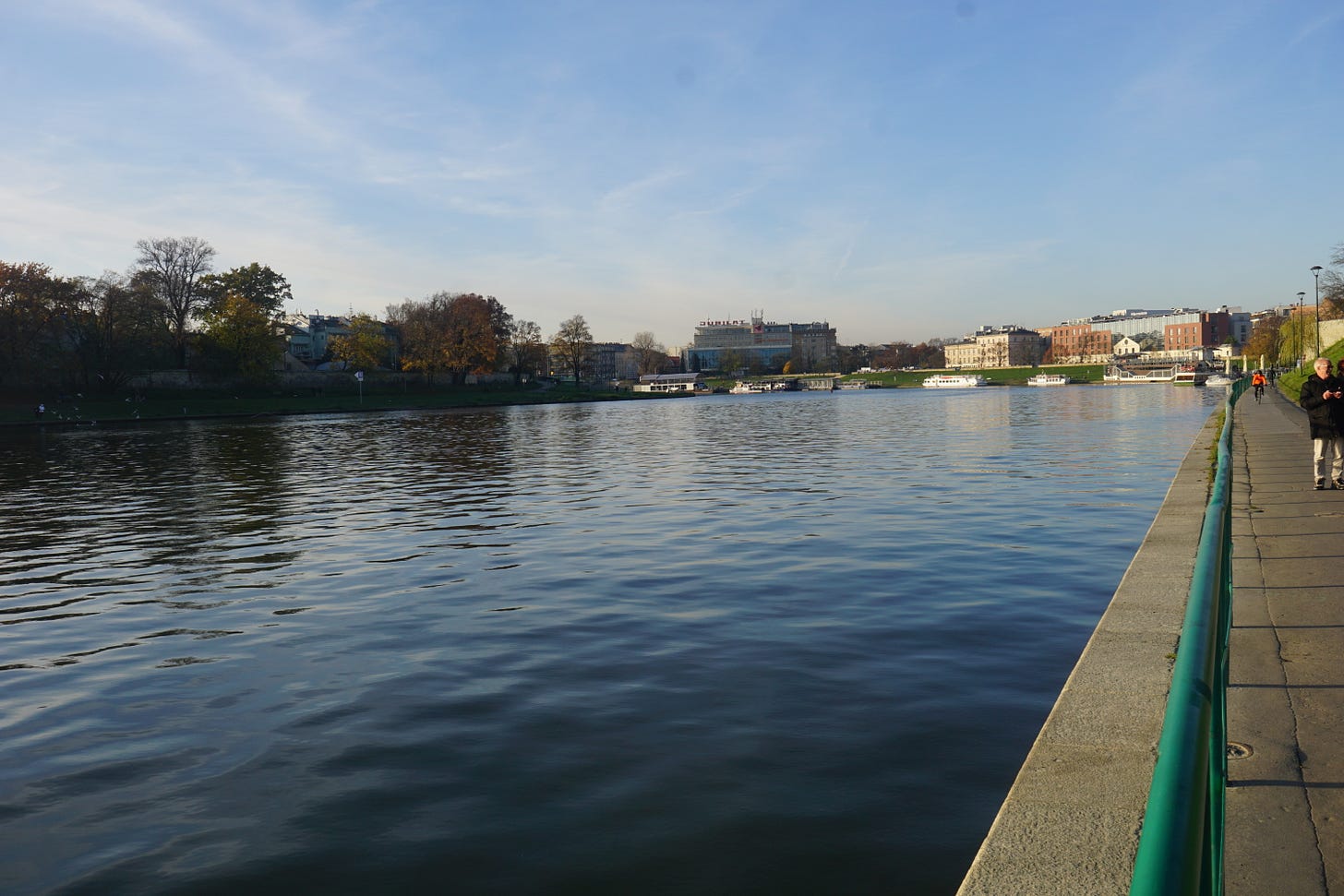Krakow: Wawel Castle
Wawel (pronounced Vavelle) Castle is claimed to be the most historically and culturally significant site in all of Poland - digging beneath its surface, you’ll find traces of the original building from 970, but the main castle was built in the 14 century, with a number of bits and pieces added over the years. Before Warsaw became the capital in the 16th century, it was the royal residence. When Poland lost independence, it was a symbol of endurance, of Poland if you like but it was not a good time for the castle - looted by the Prussians in 1795 and turned into army barracks when under Austrian rule - they stayed until 1905. It was reoccupied during WW2, but at least this time as residence of the Governor.
It sits above the city, beside the river, and is visible from many parts as you walk around Krakow. From the outside, it is not exactly overwhelming.
Once inside the walls, it still doesn’t make me think castle - I guess I’m expecting stone walls, crenellations and turrets, maybe even a moat and drawbridge.
Wawel Cathedral is at the entrance to the Castle - I don’t actually see any way to get in, and they aren’t selling tickets to it. It was used for royal coronations for centuries, and is a burial ground for many royals and other important personages.
They expect a lot of people, so sell timed entry to individual parts of the property. I get access to the first and second floors as well as the Treasury. I’ll start with that, as it won’t take long - there had been a huge collection of crown jewellery, insignia and important documents. Some of the collection was sold off to provide a war fund, but when the Prussians looted, they took almost everything, and very little has been recovered - a banner or two and the coronation sword, Szcerbiec. Apart from them, they have a collection of mugs and tankards which has been put together over the years and a so-called collectors cabinet - bits and pieces the King has collected, like the gauntlet - made of steel, I have no idea how flexible it might be.
My visit starts with the first floor - the private apartments of the royal family. The rooms tend not to be furnished according to their original function, but rather they display stuff. As you can probably work out, progress is linear, from room to room as they are laid out around the courtyard.
There is a vestibule and then a room called the wardrobe, but it is as big as my living room! The ceiling was done in the 2nd quarter of the 16th century.
Here are the next few rooms, not much to say about them.
This room was used as “lodgings”, which I think means it was a guest room. Down at the far end is this very interesting work - the Last Judgment, by a follower of Hieronymus Bosch. Then there’s a room which is furnished in ordinary style, followed by an addition, called the hens Foot Extension. I don’t get it really, because it was built for King Sigismund I the Old - but since he’s the King, wasn’t the castle his home already? I liked the space.
This was his bedroom. Nearly done with the first floor - just an enormous collection of silverware and porcelain to go. There were several cabinets like these two.
I have time for a coffee break before my next ticket comes live, to the second floor of the castle - the state rooms. This is the envoys’ hall, where they held the parliament, and people could conduct official business with the king.
Not the throne, probably not even close - it is a 19th century reproduction of a 17 century armchair, but does feature tapestry from the royal collection. This fireplace would take some effort to get a good fire going, but must then produce a huge amount of heat!
A number of rooms on this floor are done in this dark style - I don;t know how original it is. And, finally, the crown! People didn’t want Augustus III to be crowned, so they hid the regalia - meaning more had to be made. There’s mention of imitations being made - I don’t know if these are real or fake.
After being in the castle grounds for several hours, I go take a walk along the Vistula River.
Cheers!




